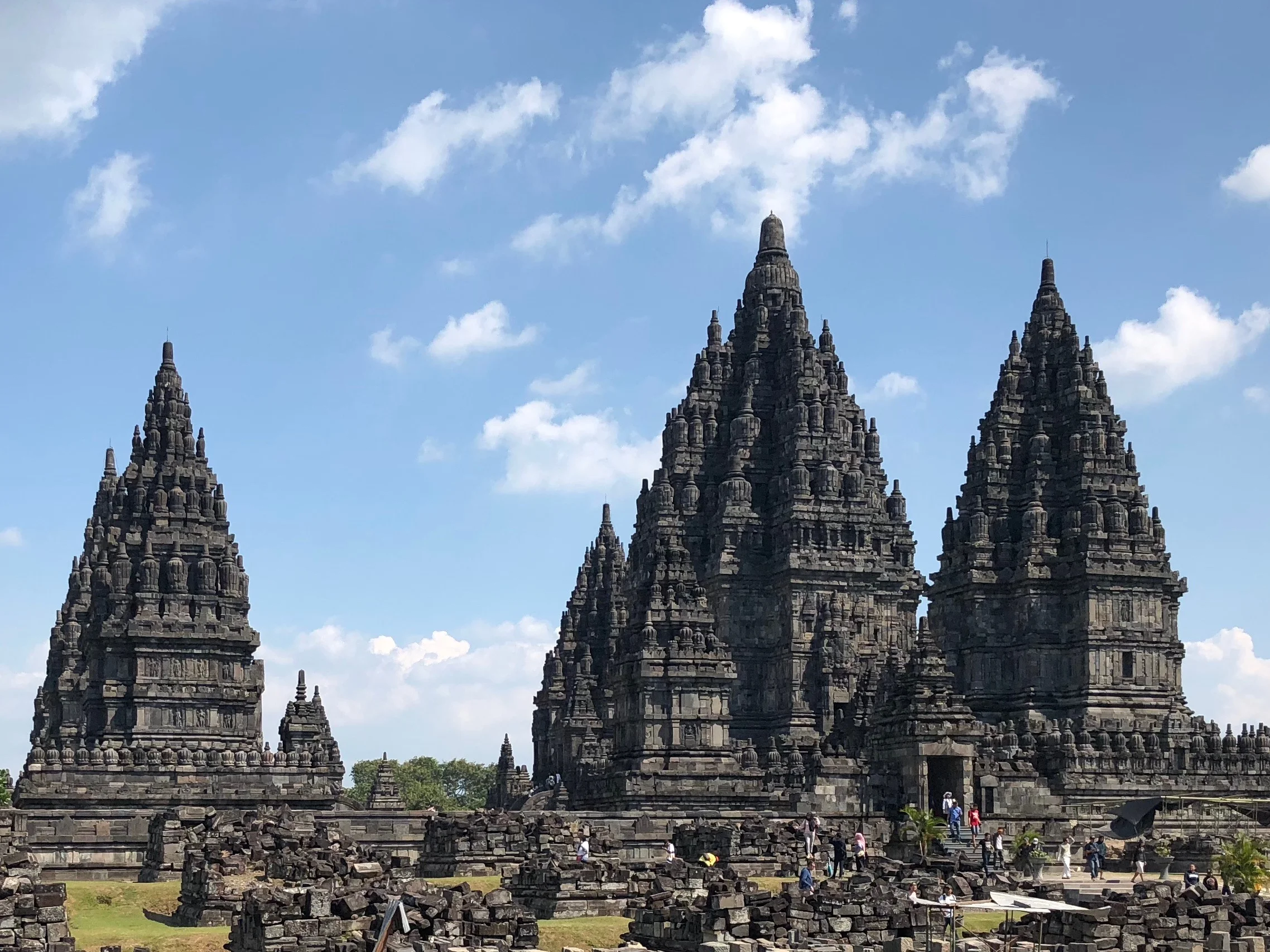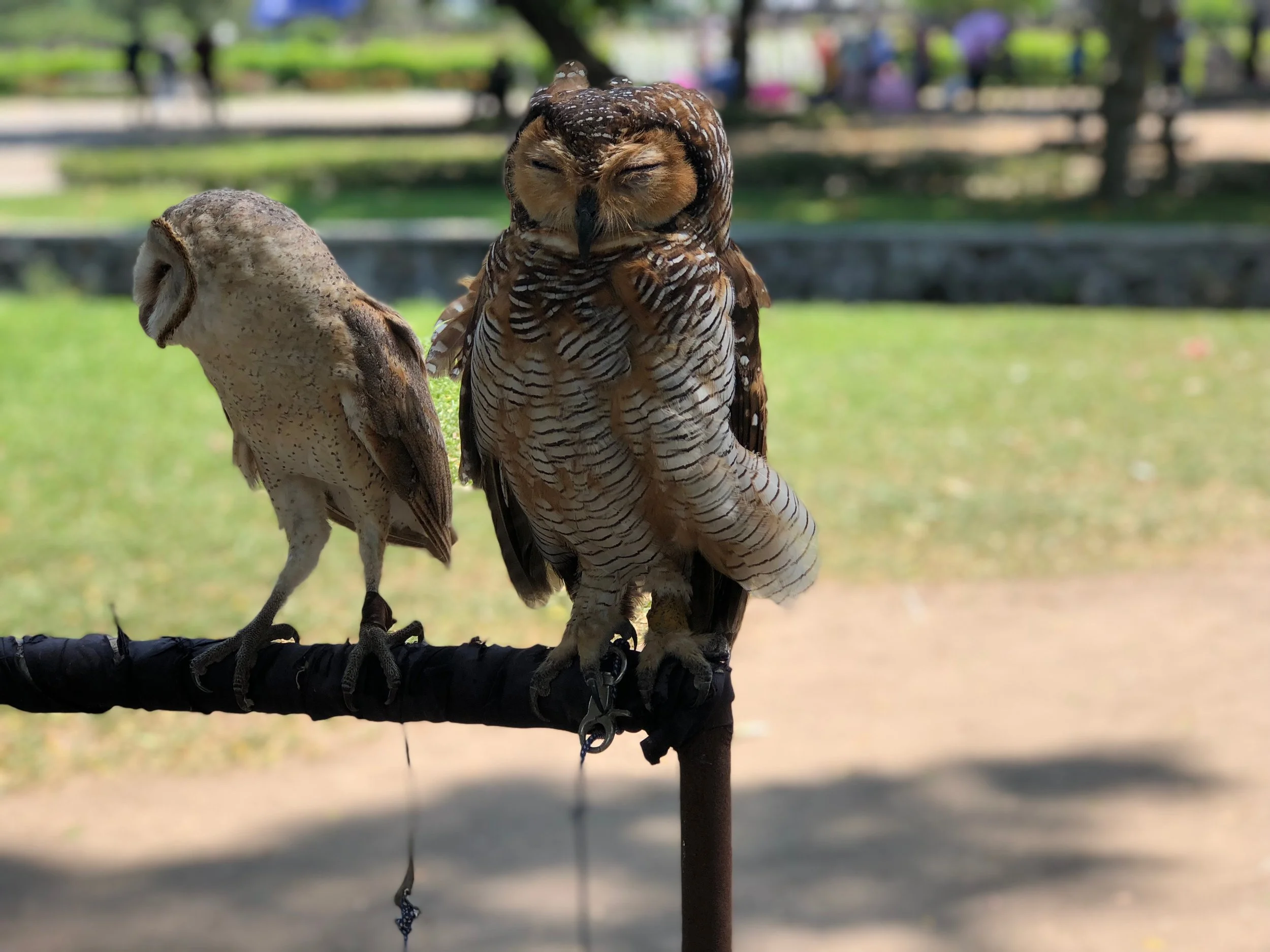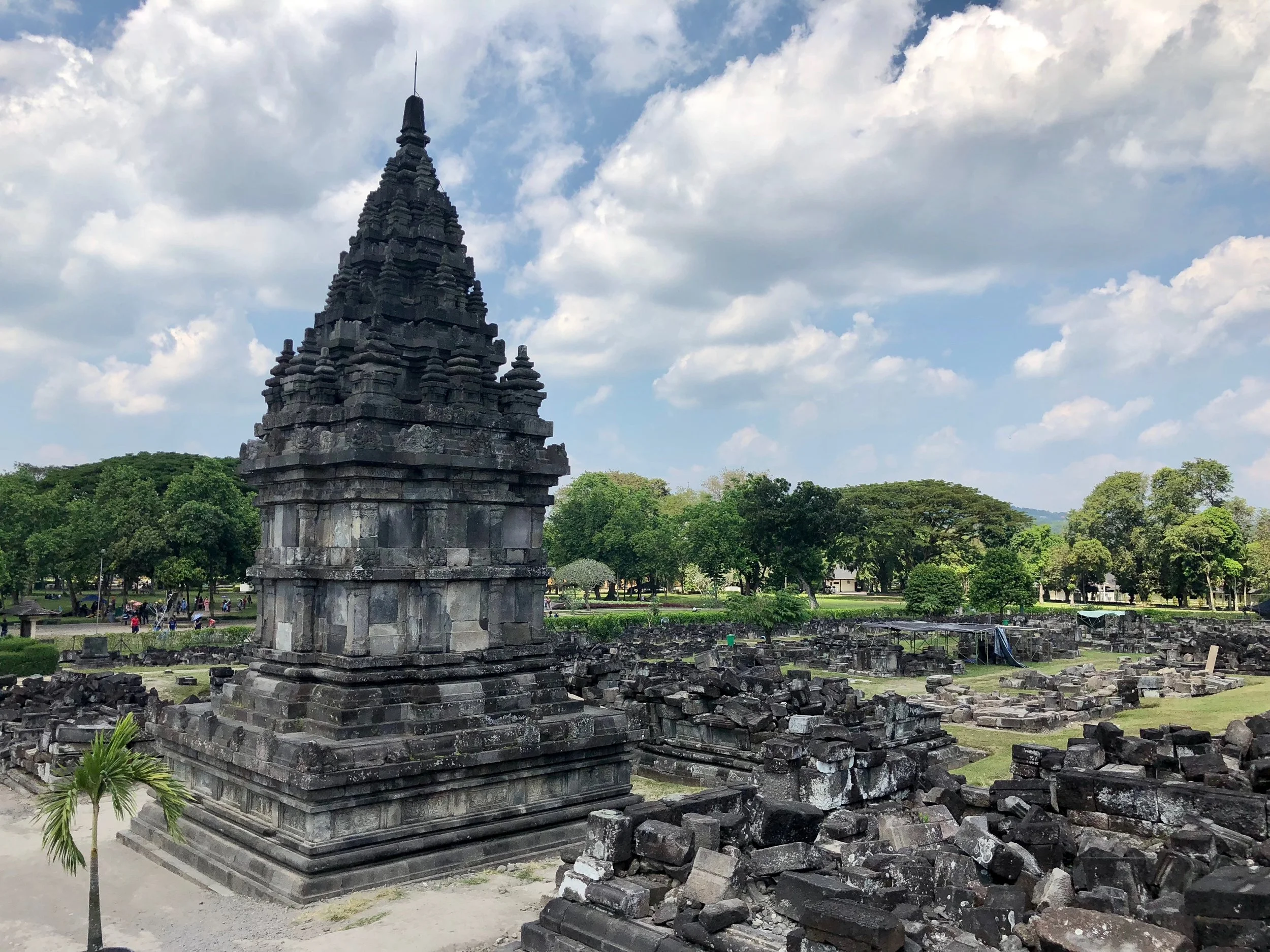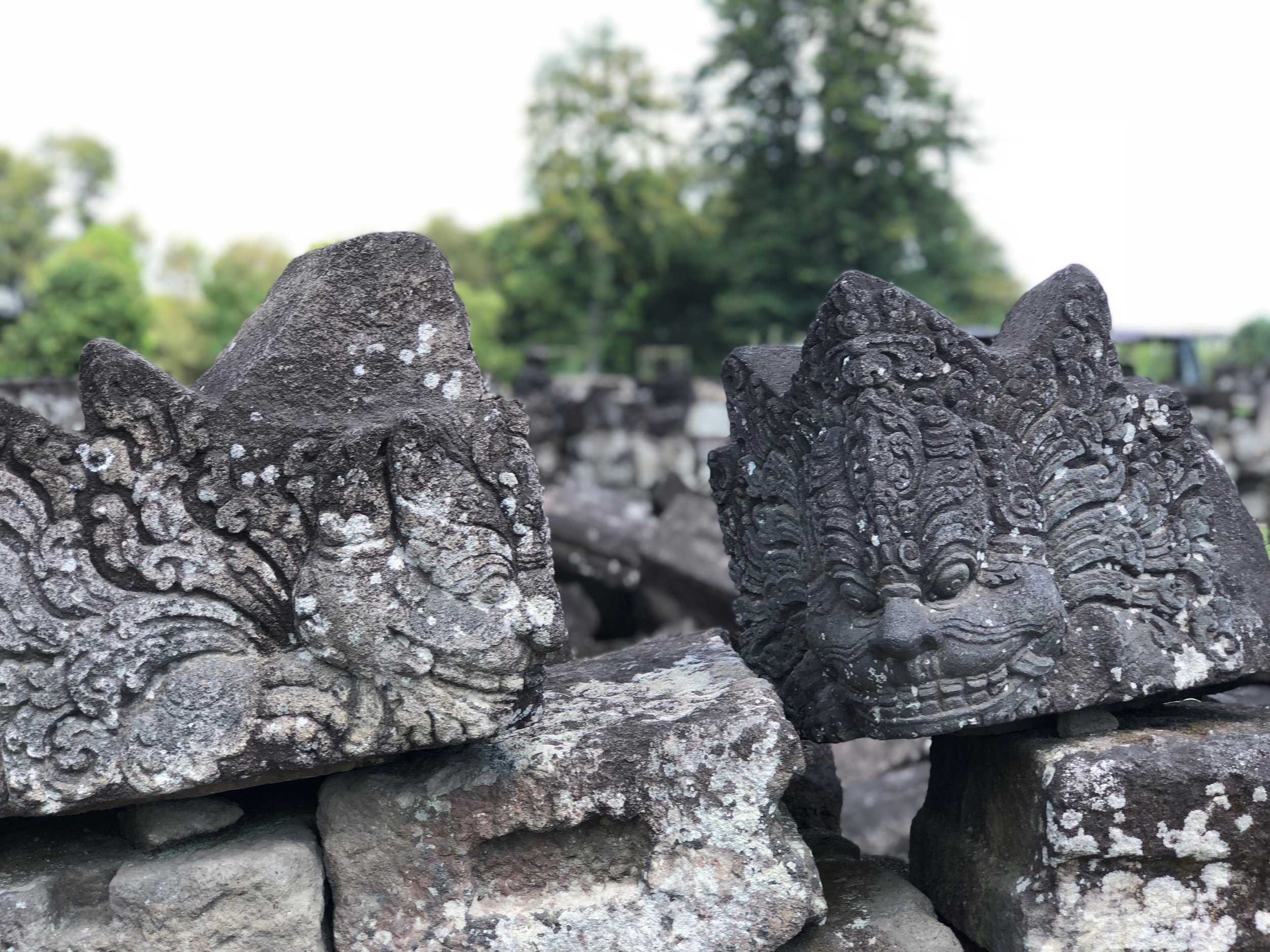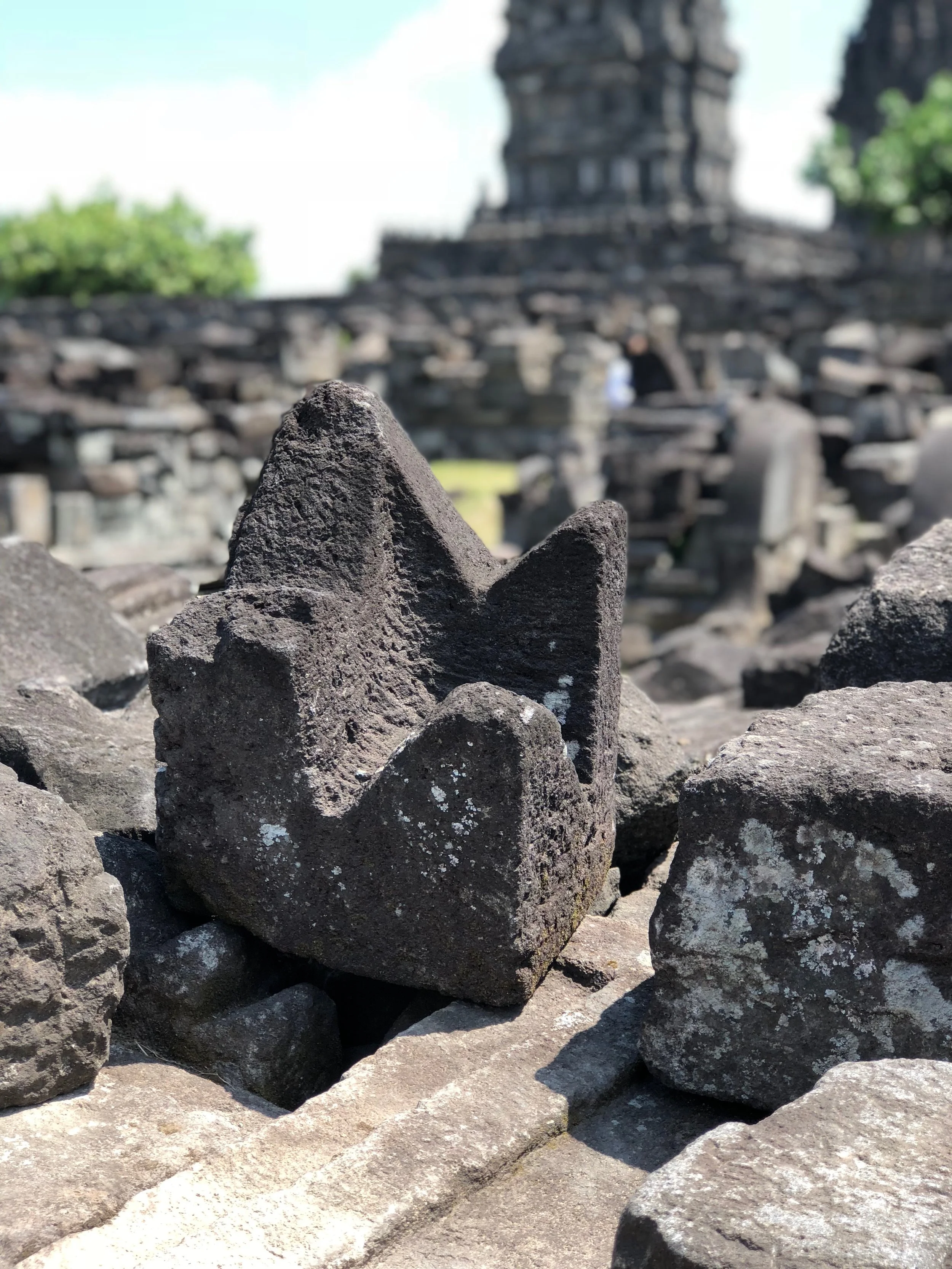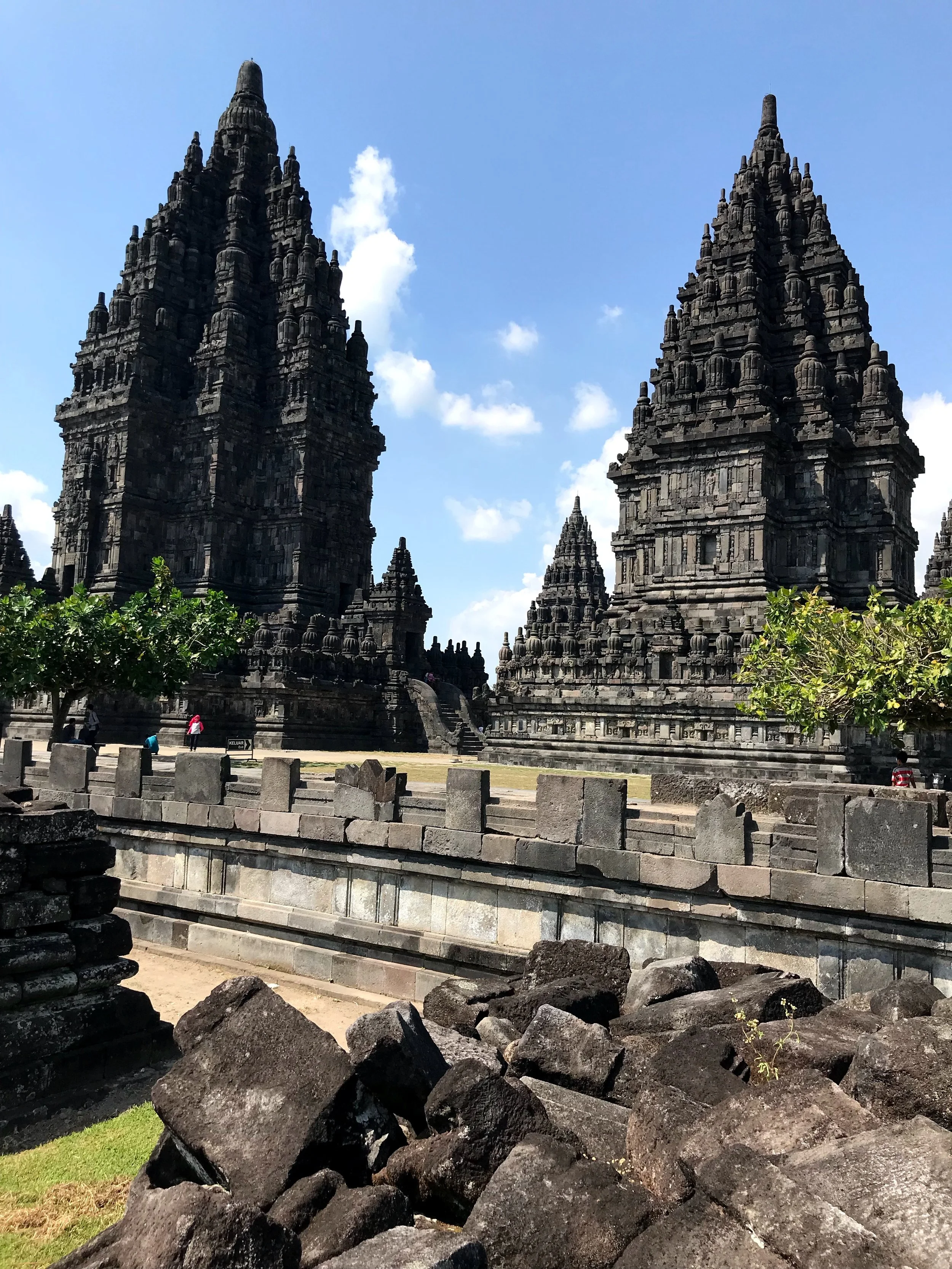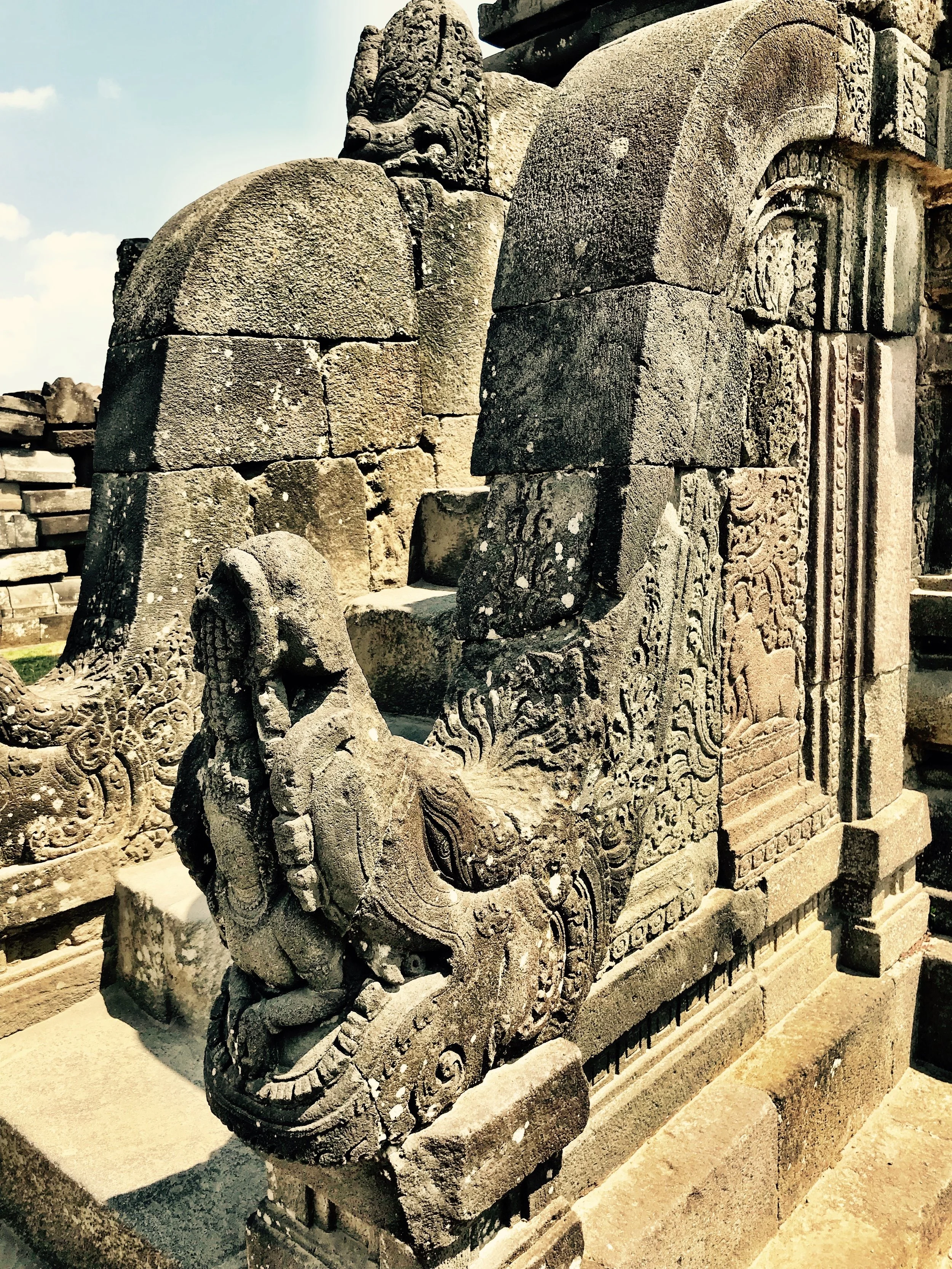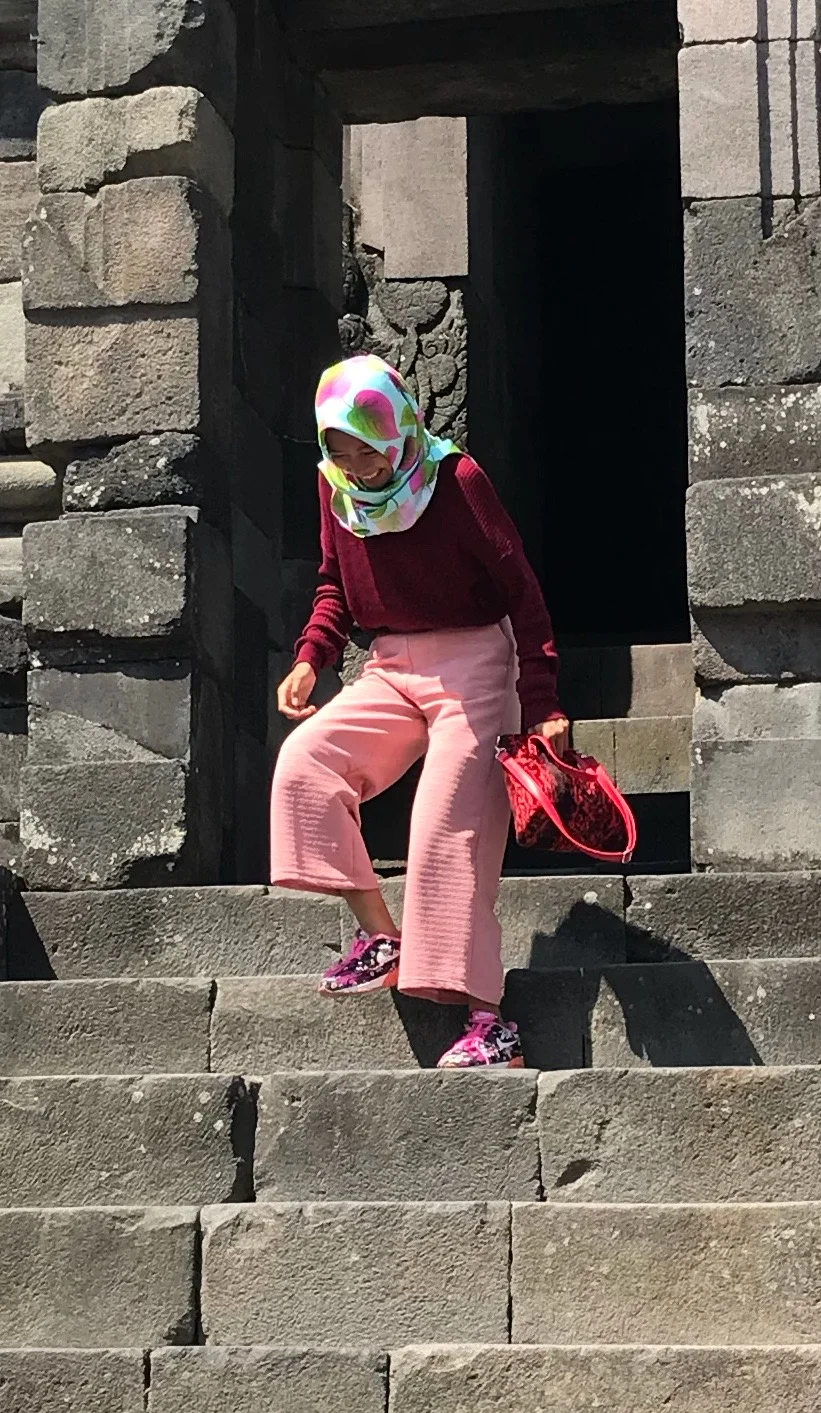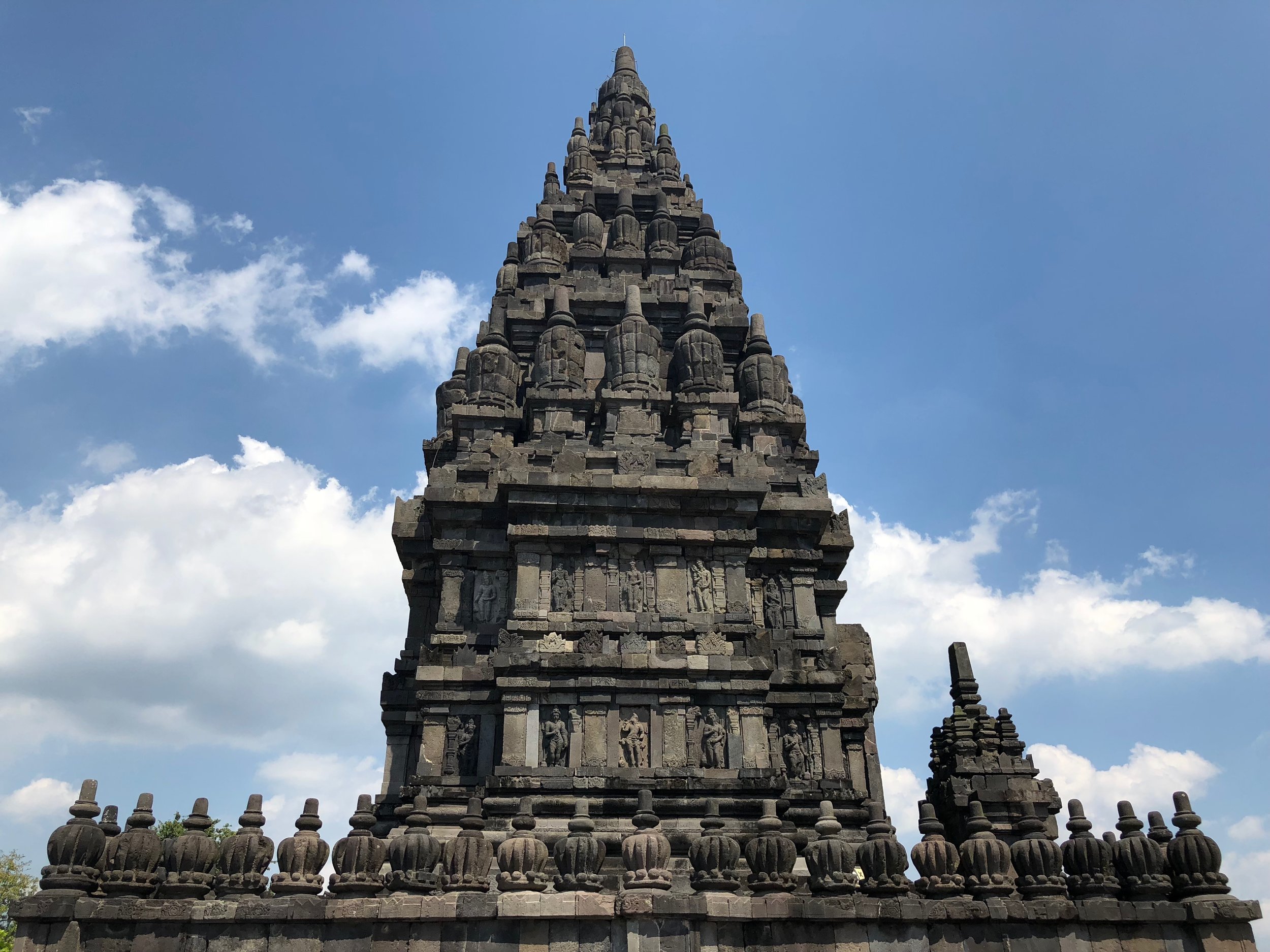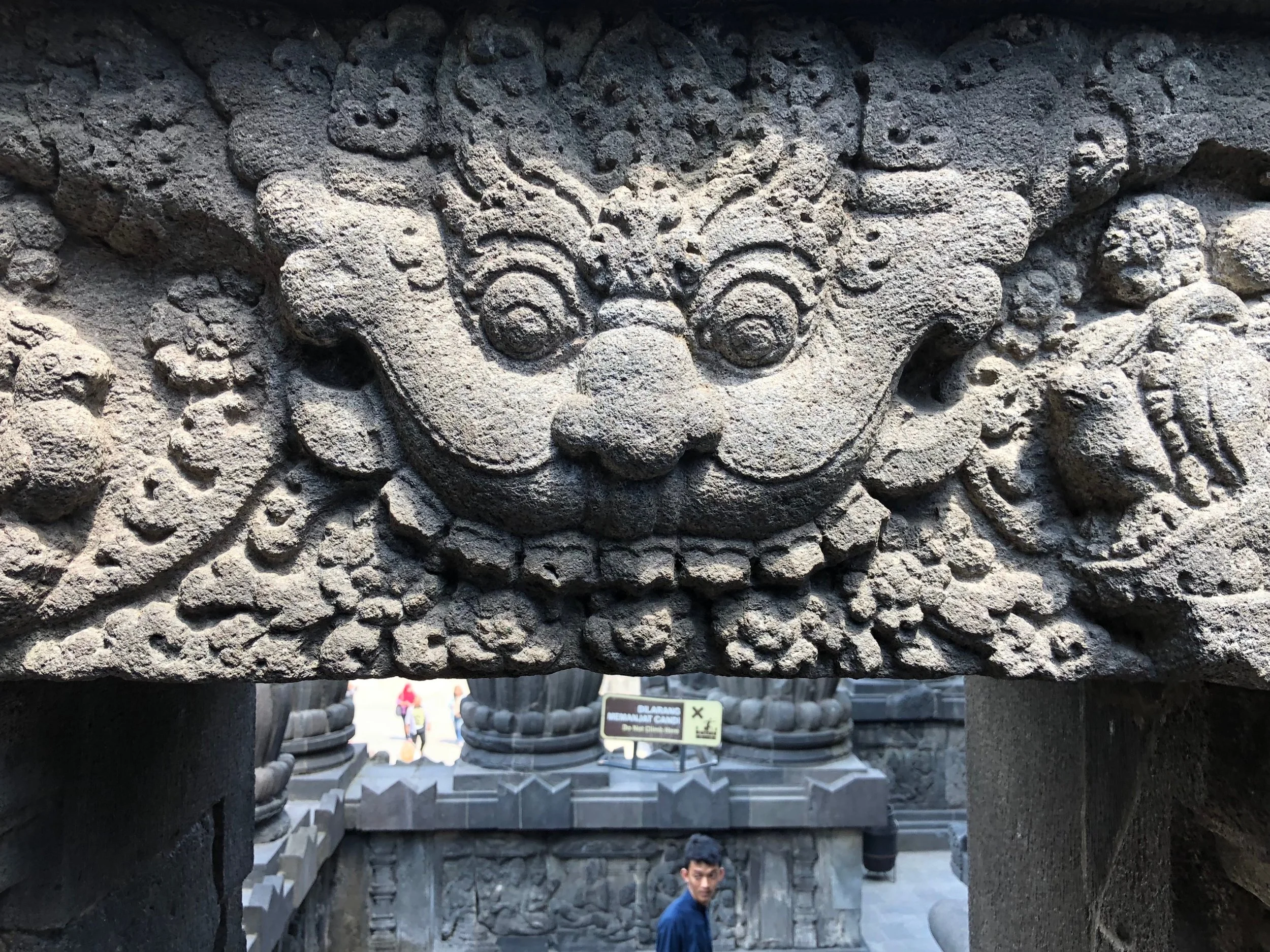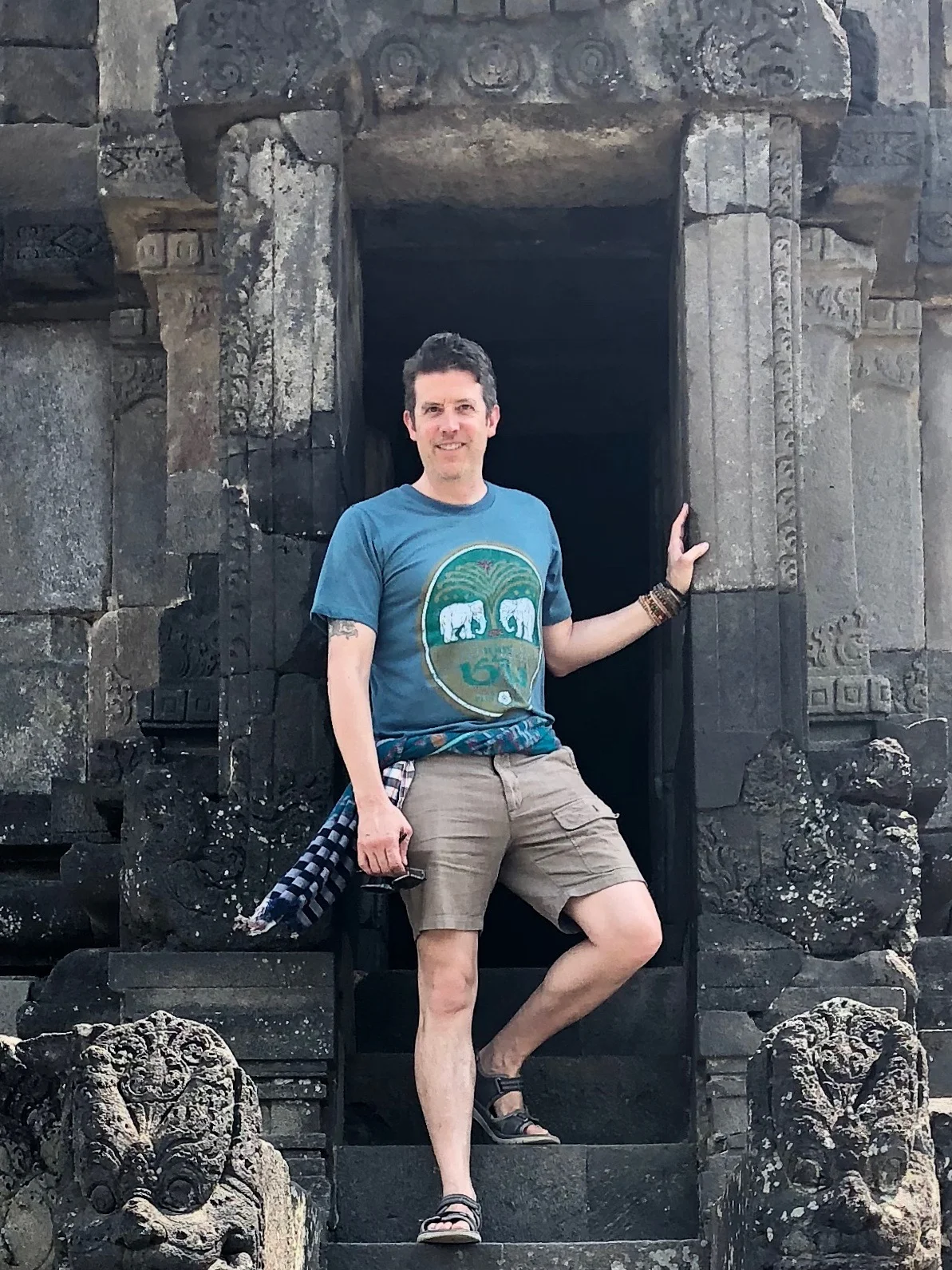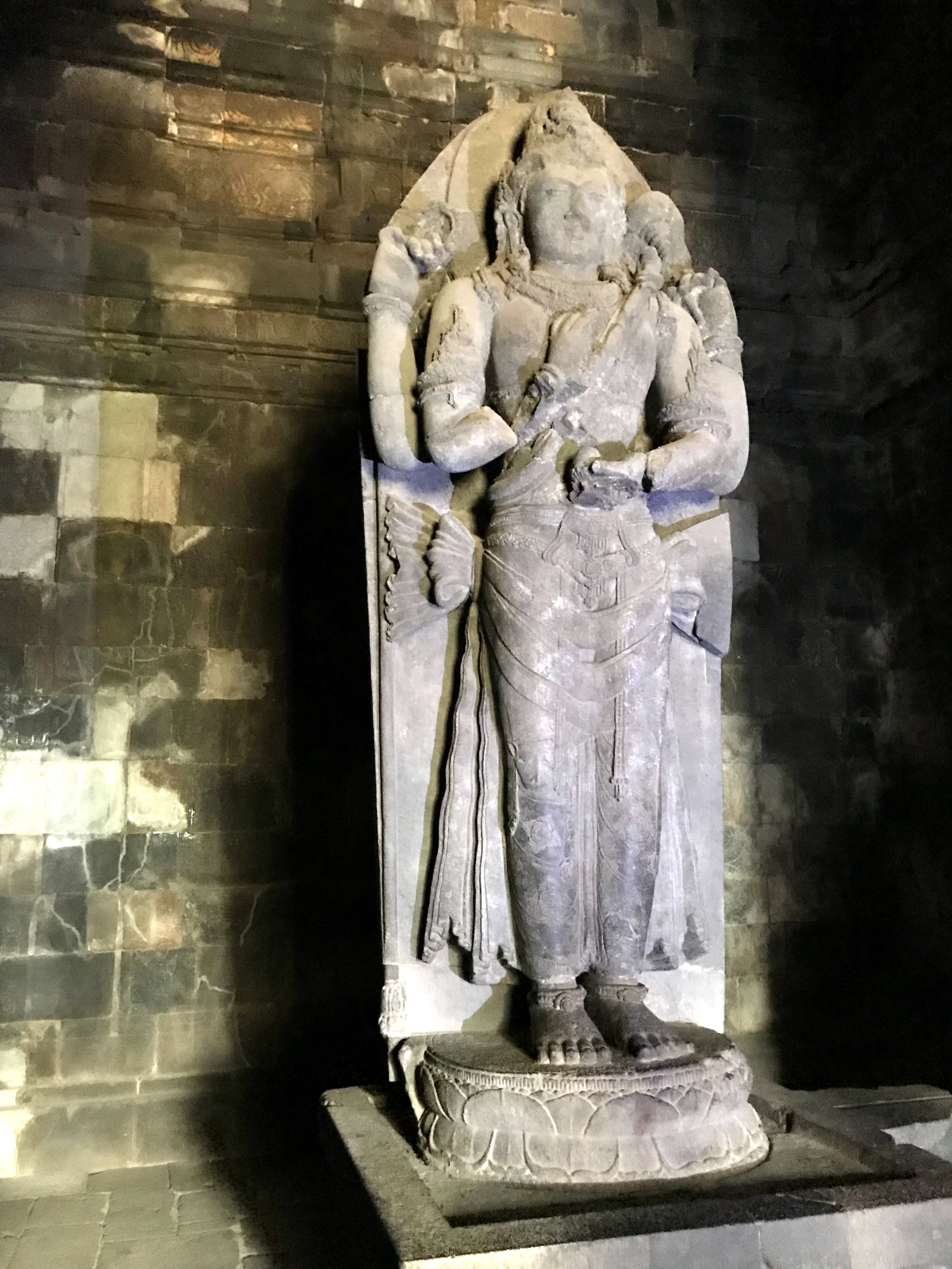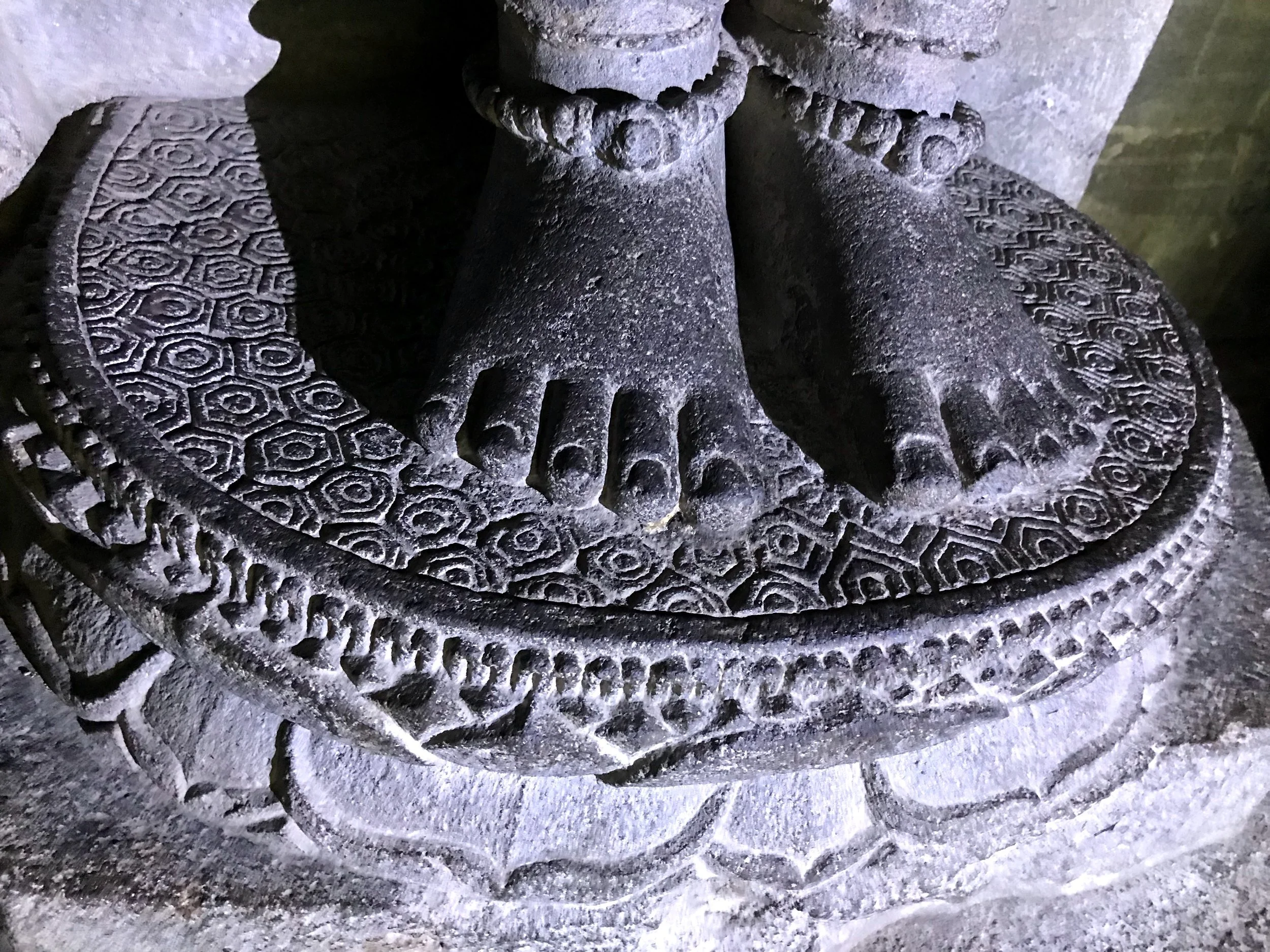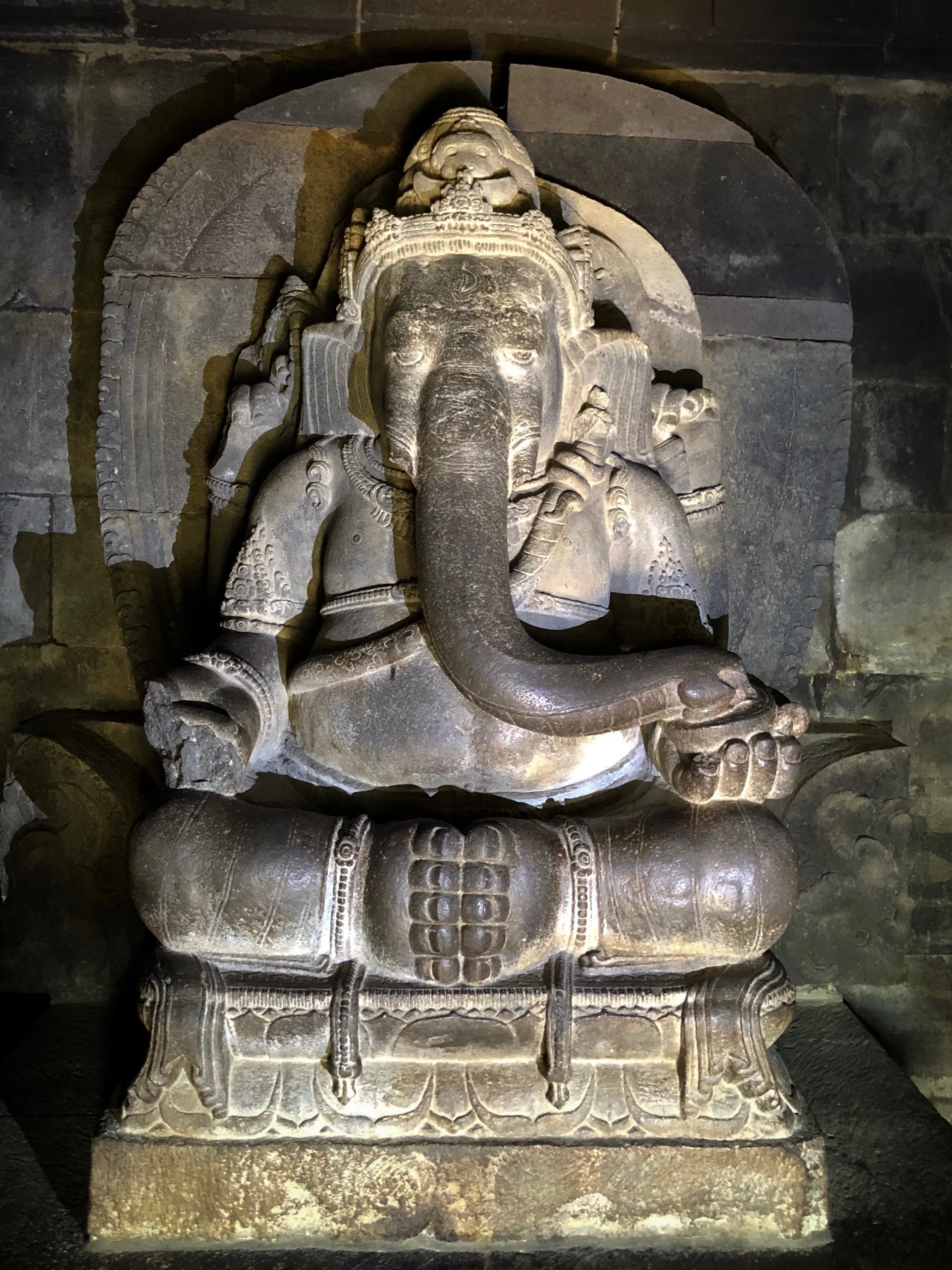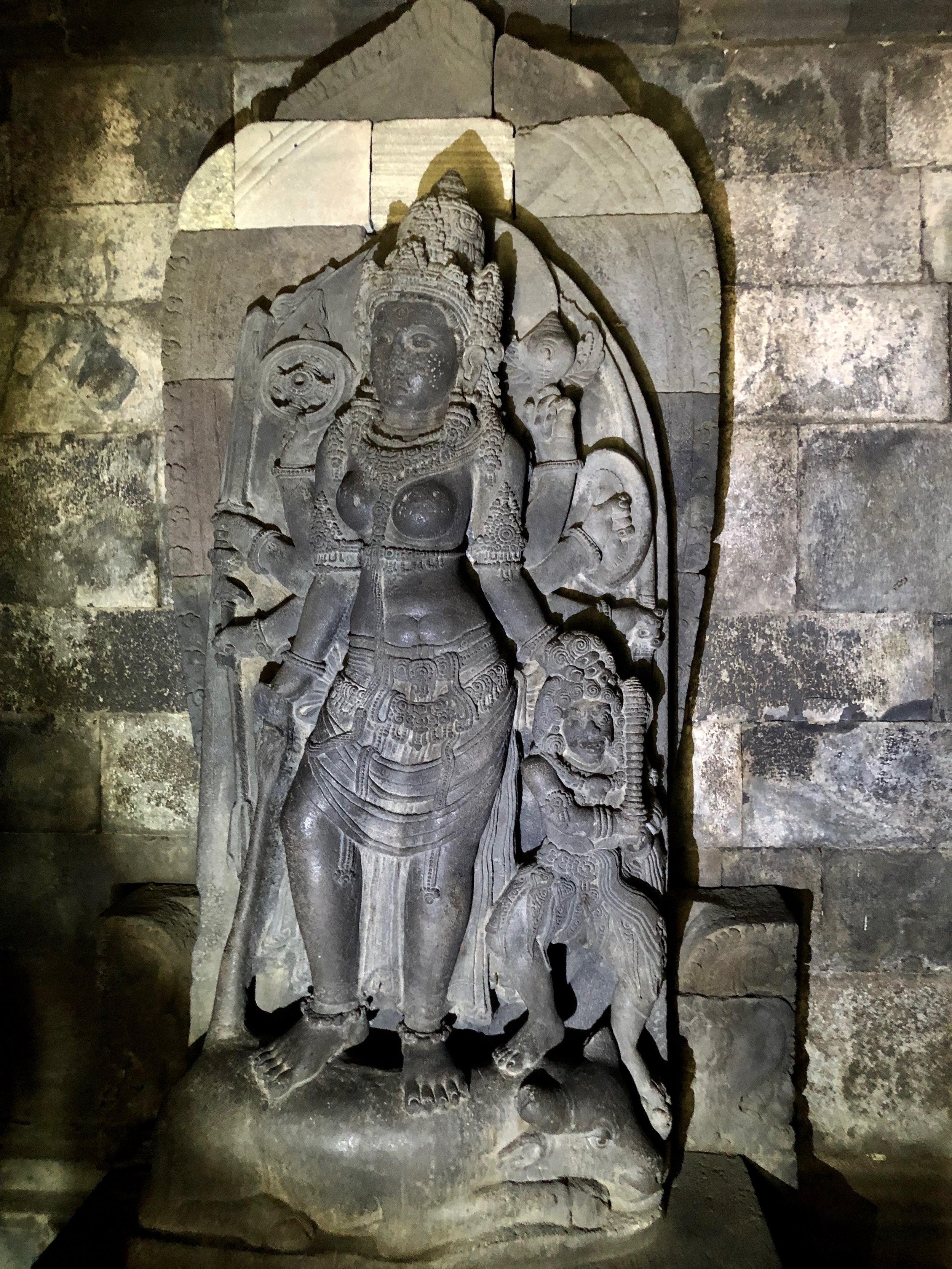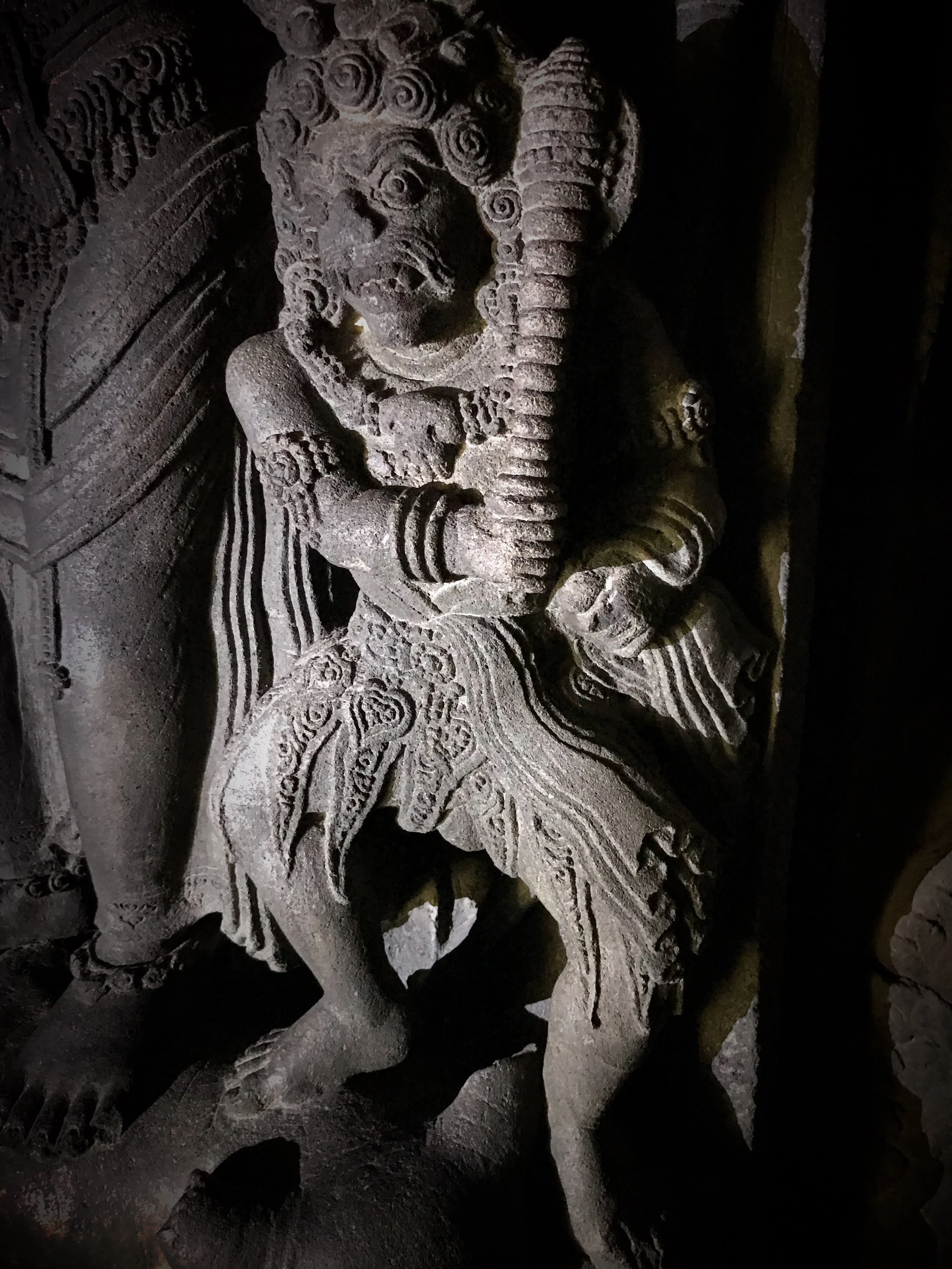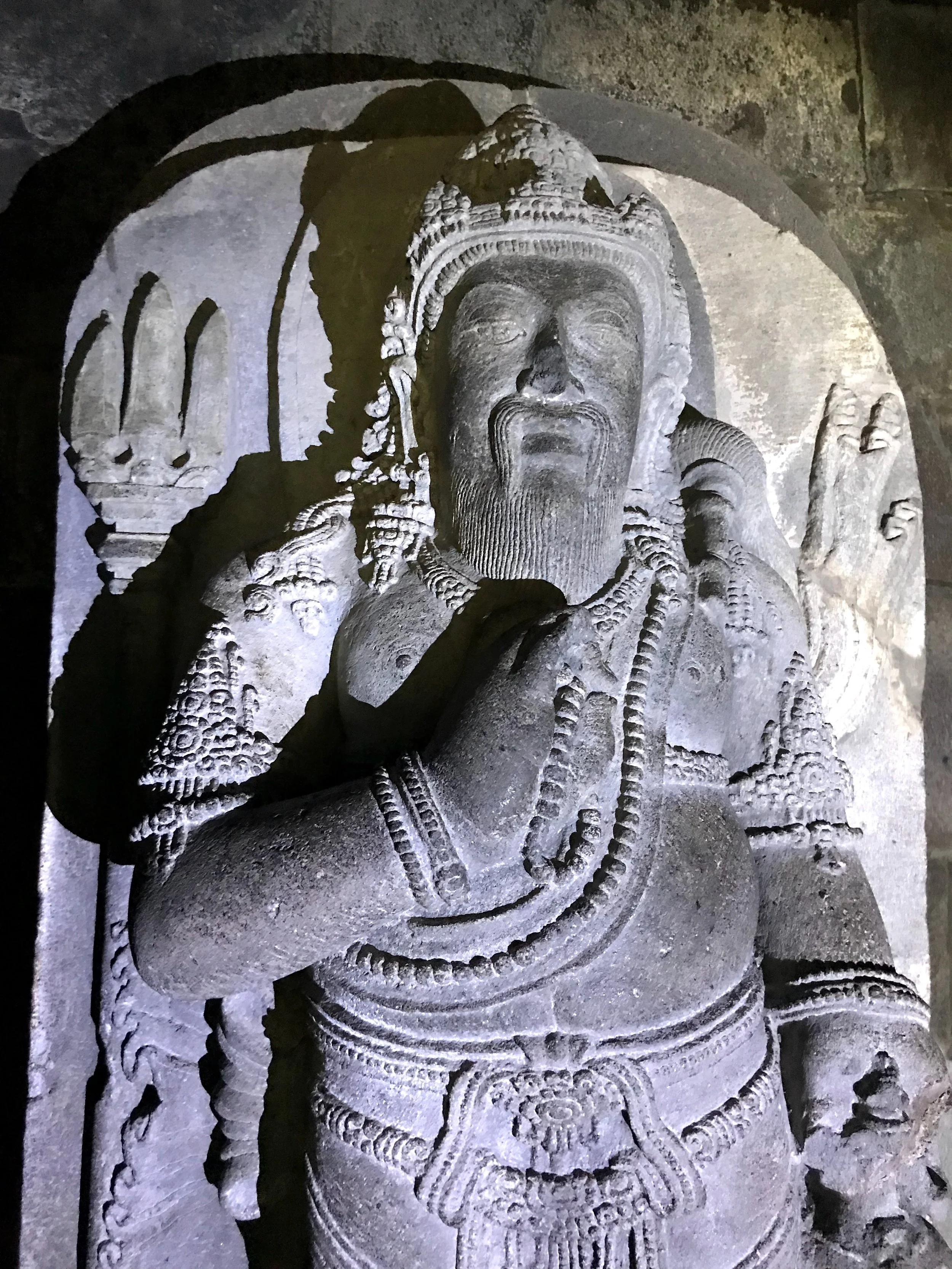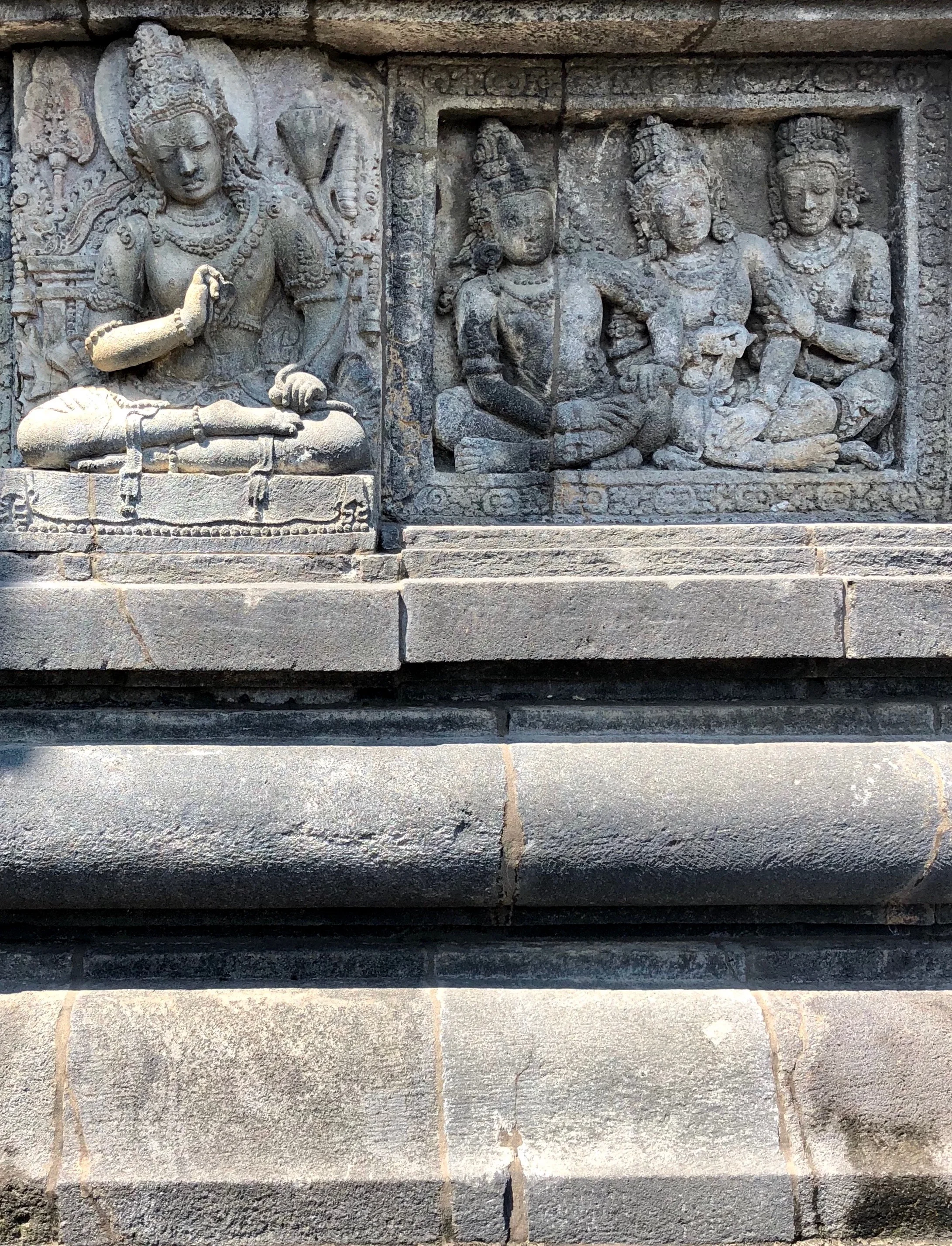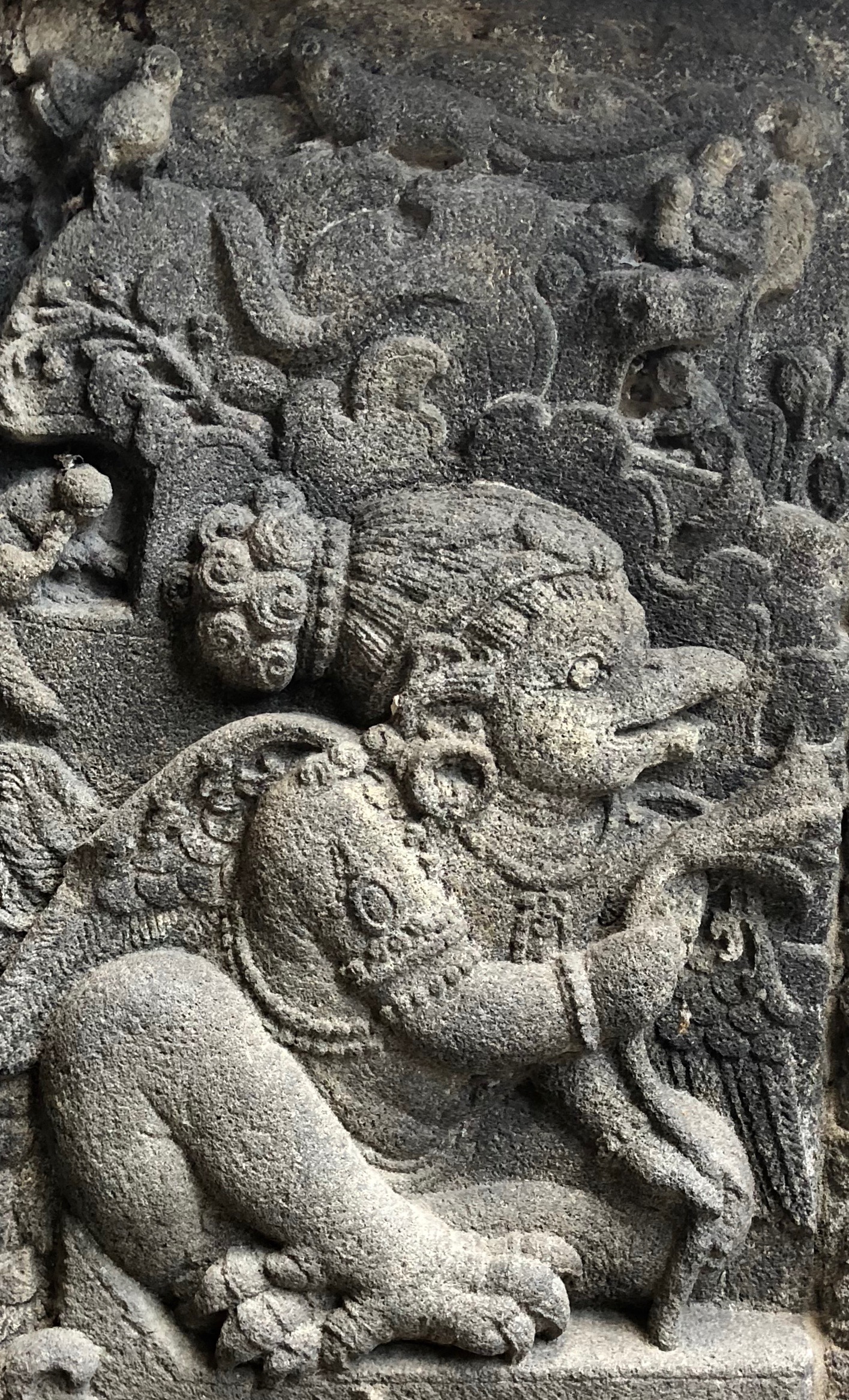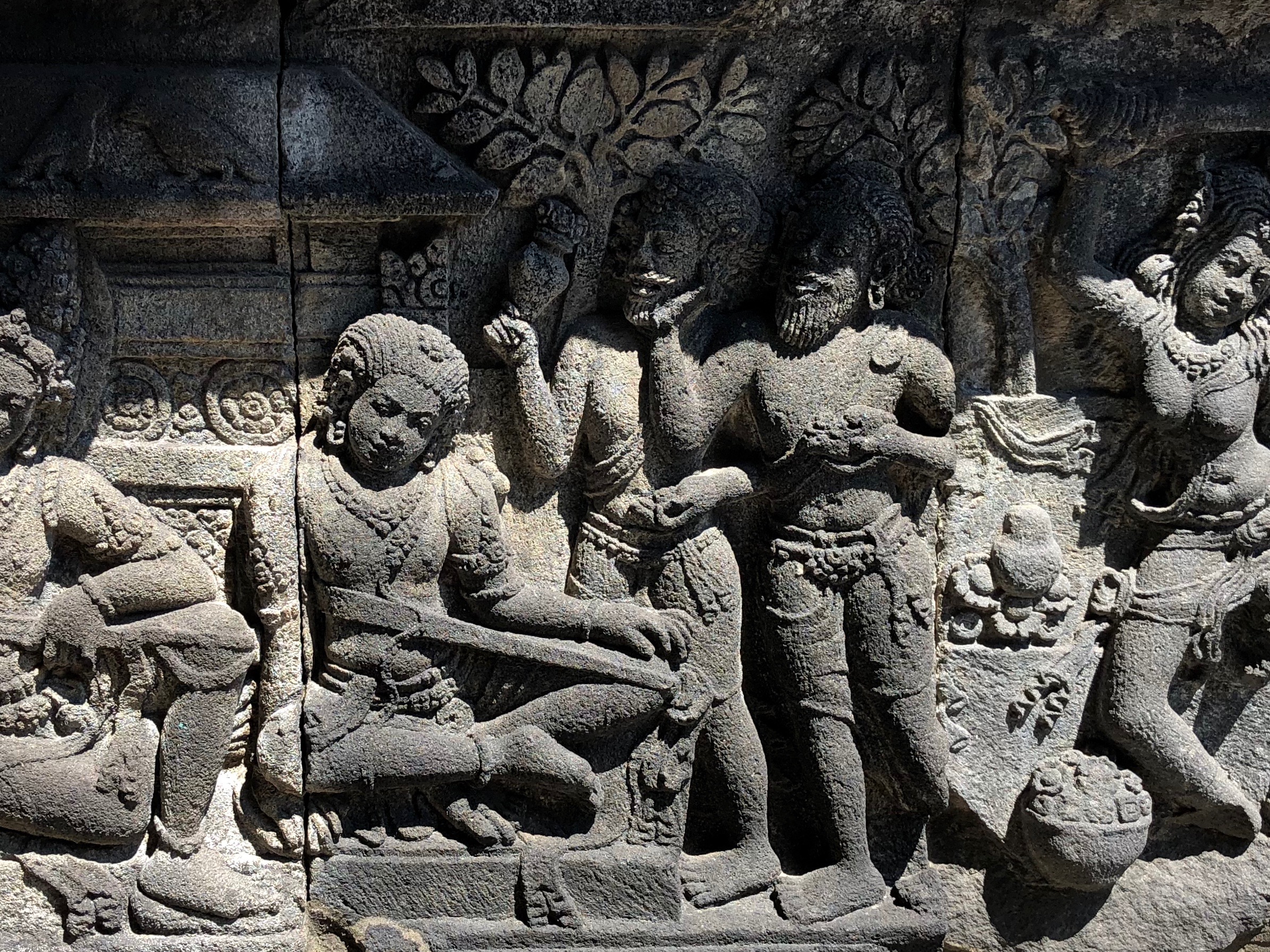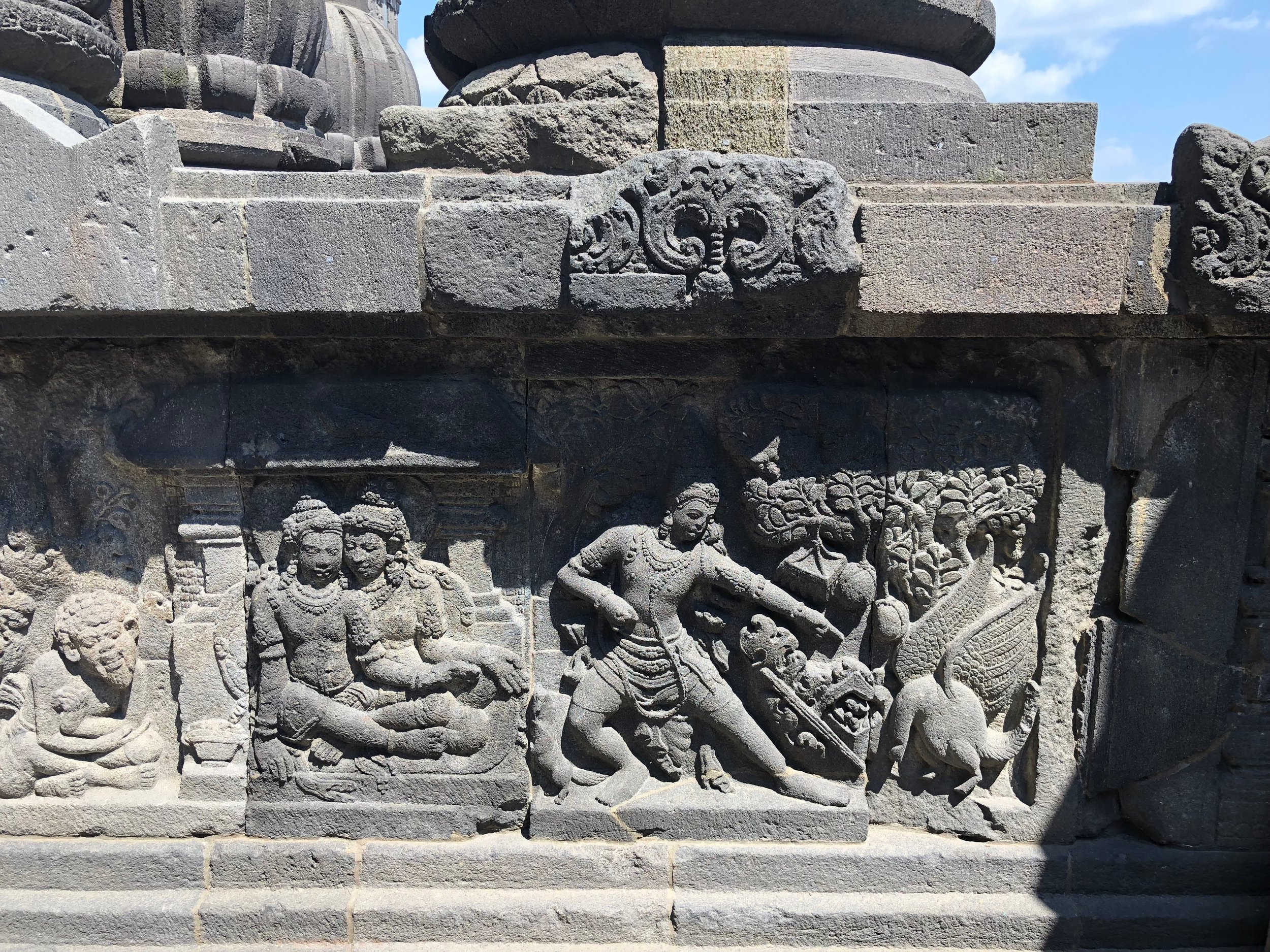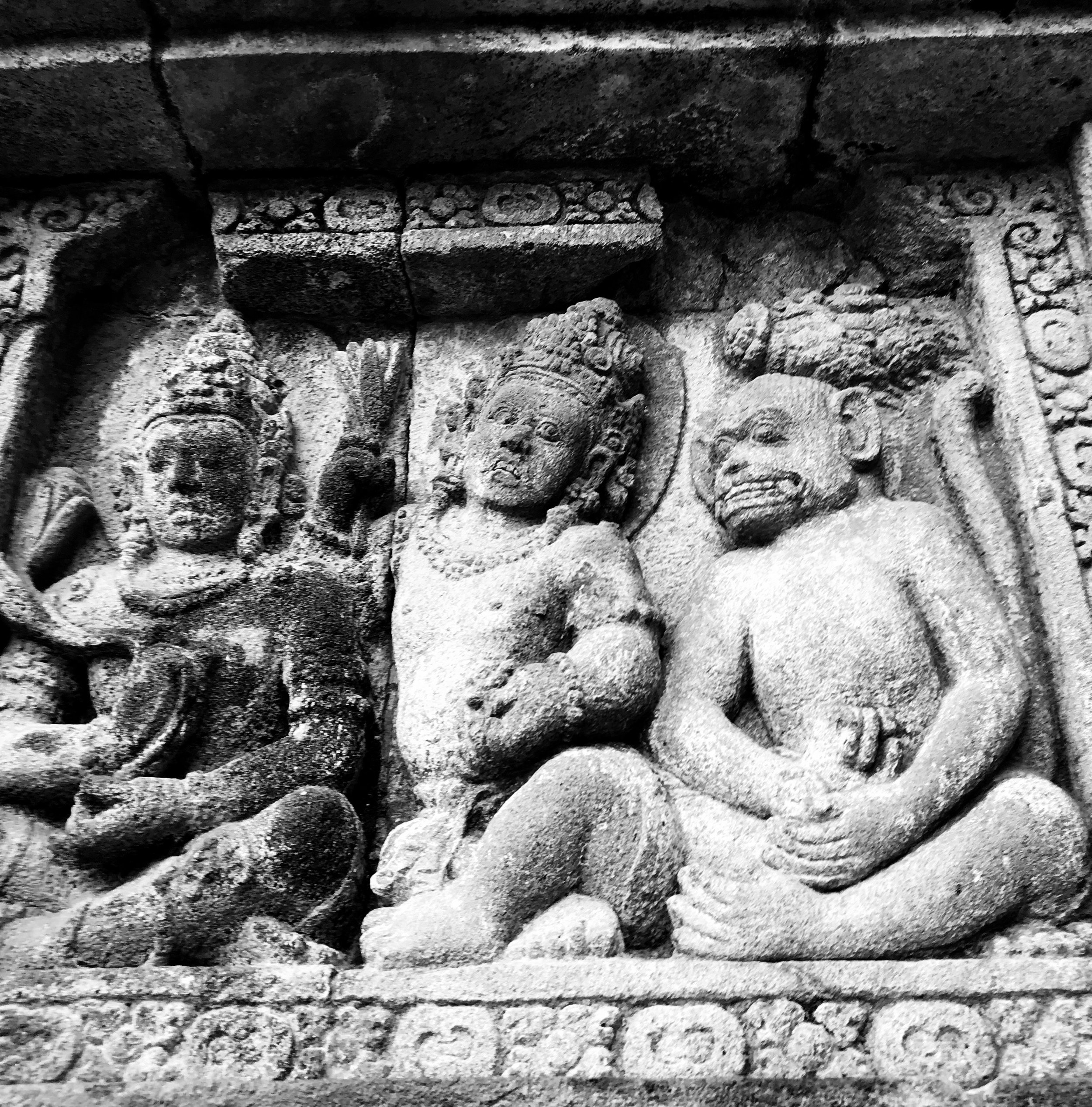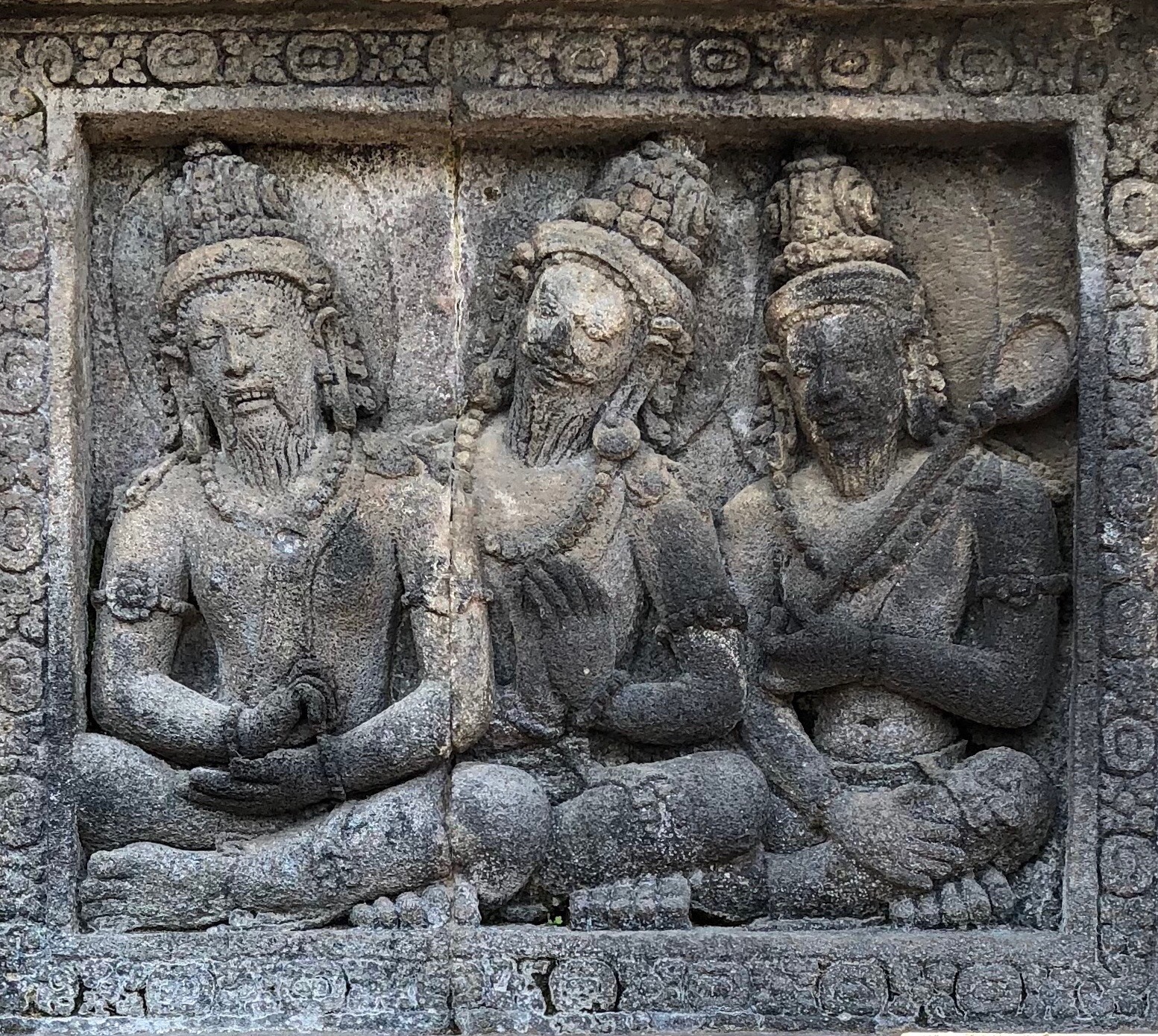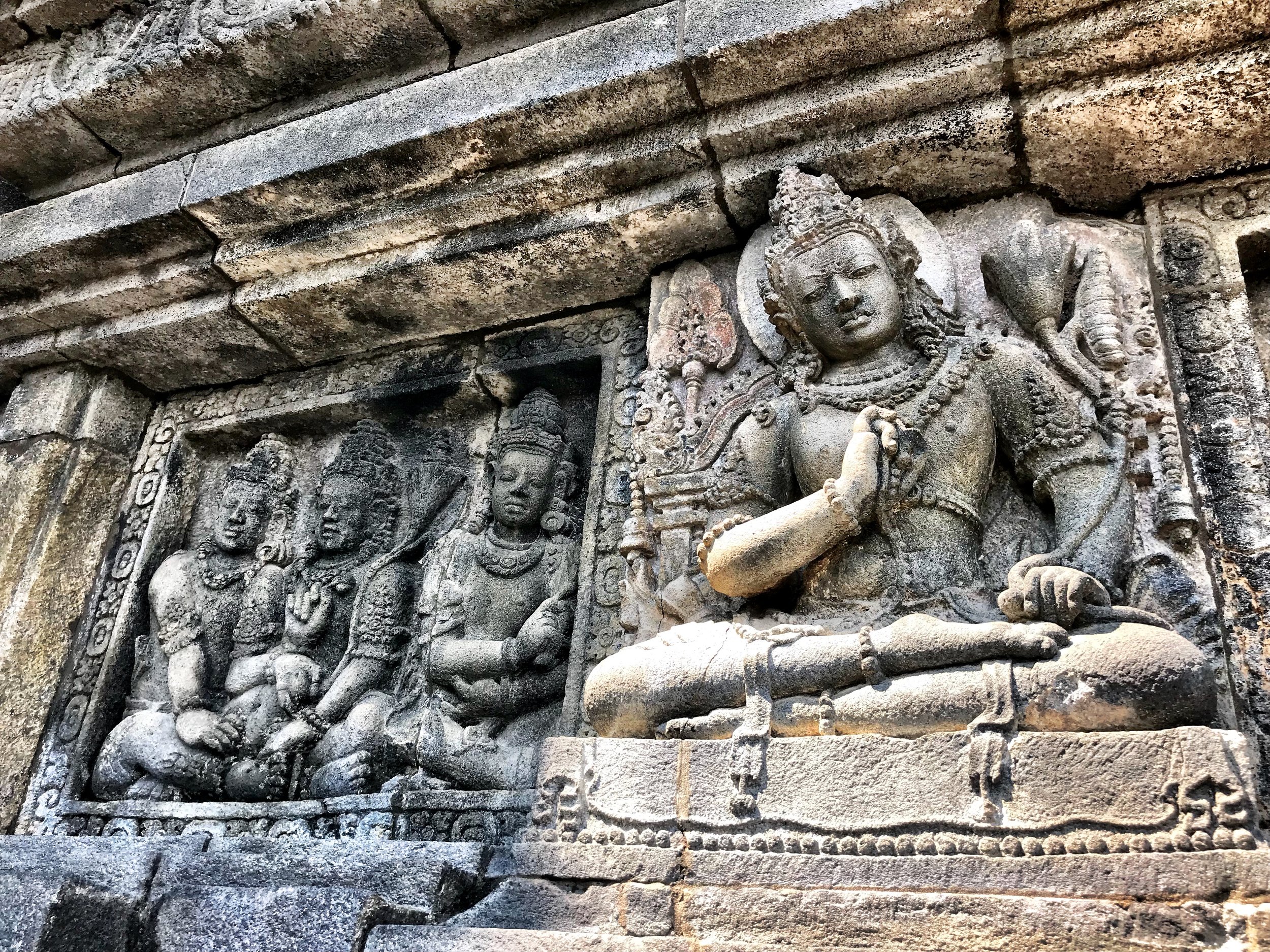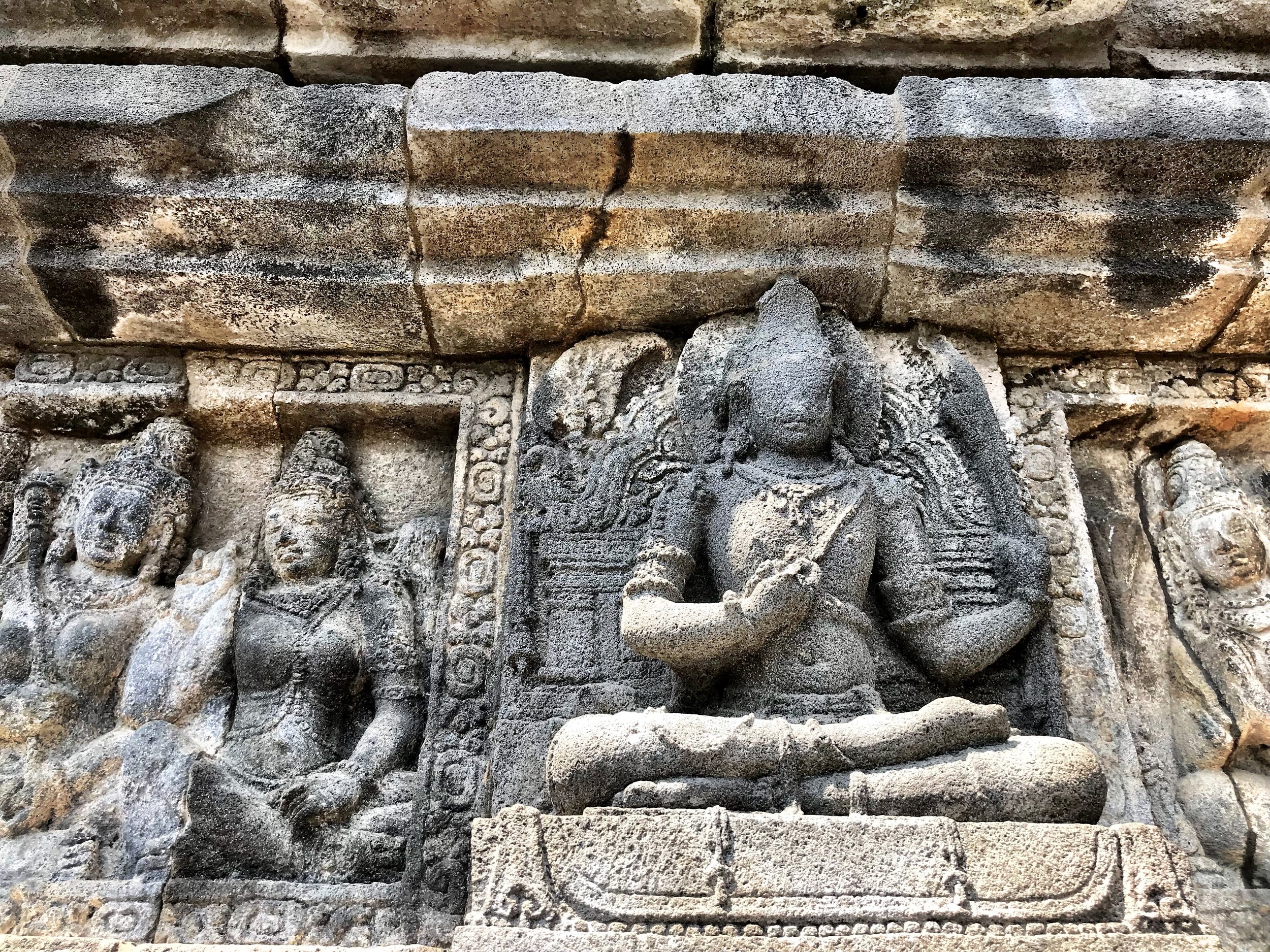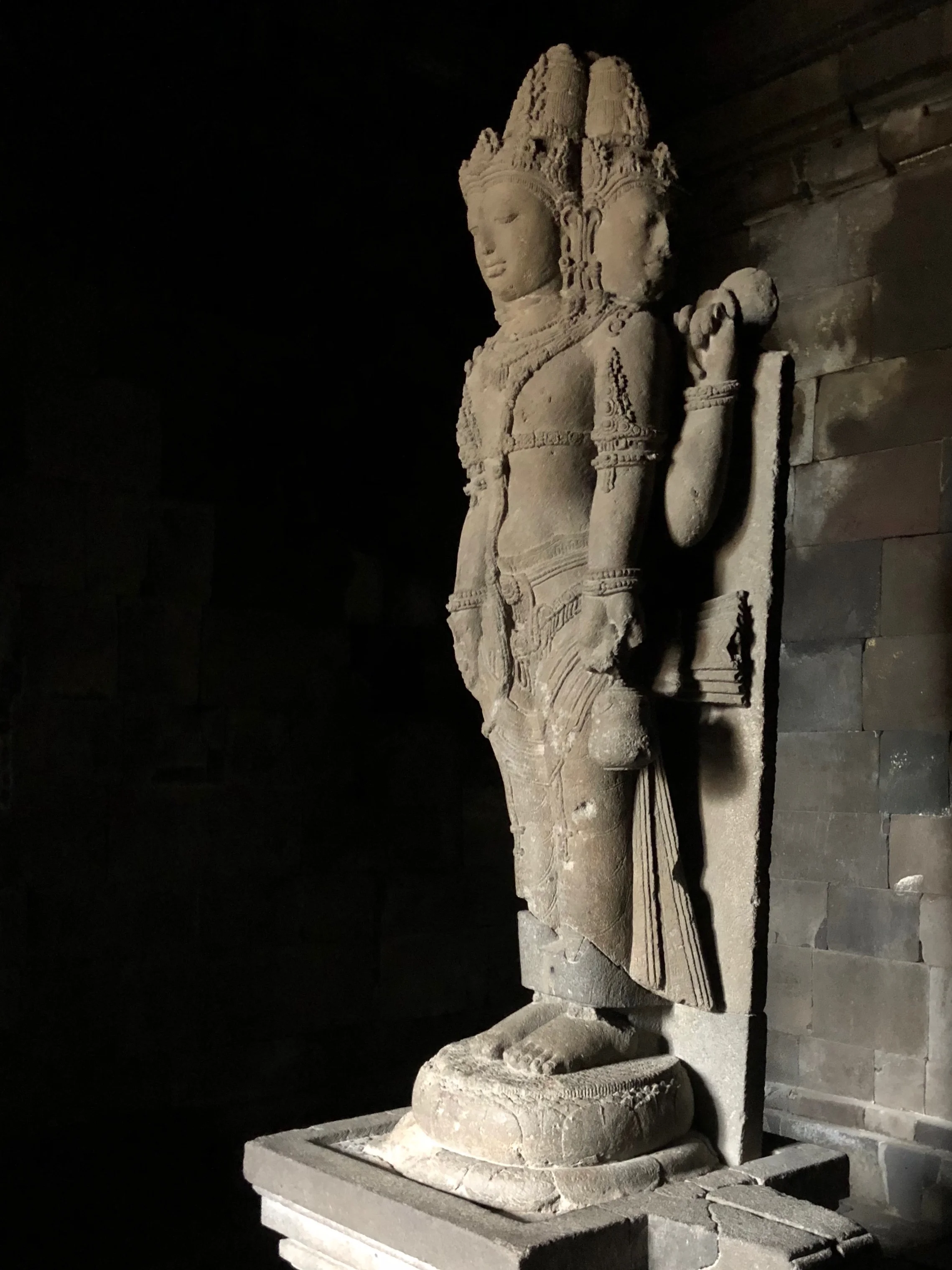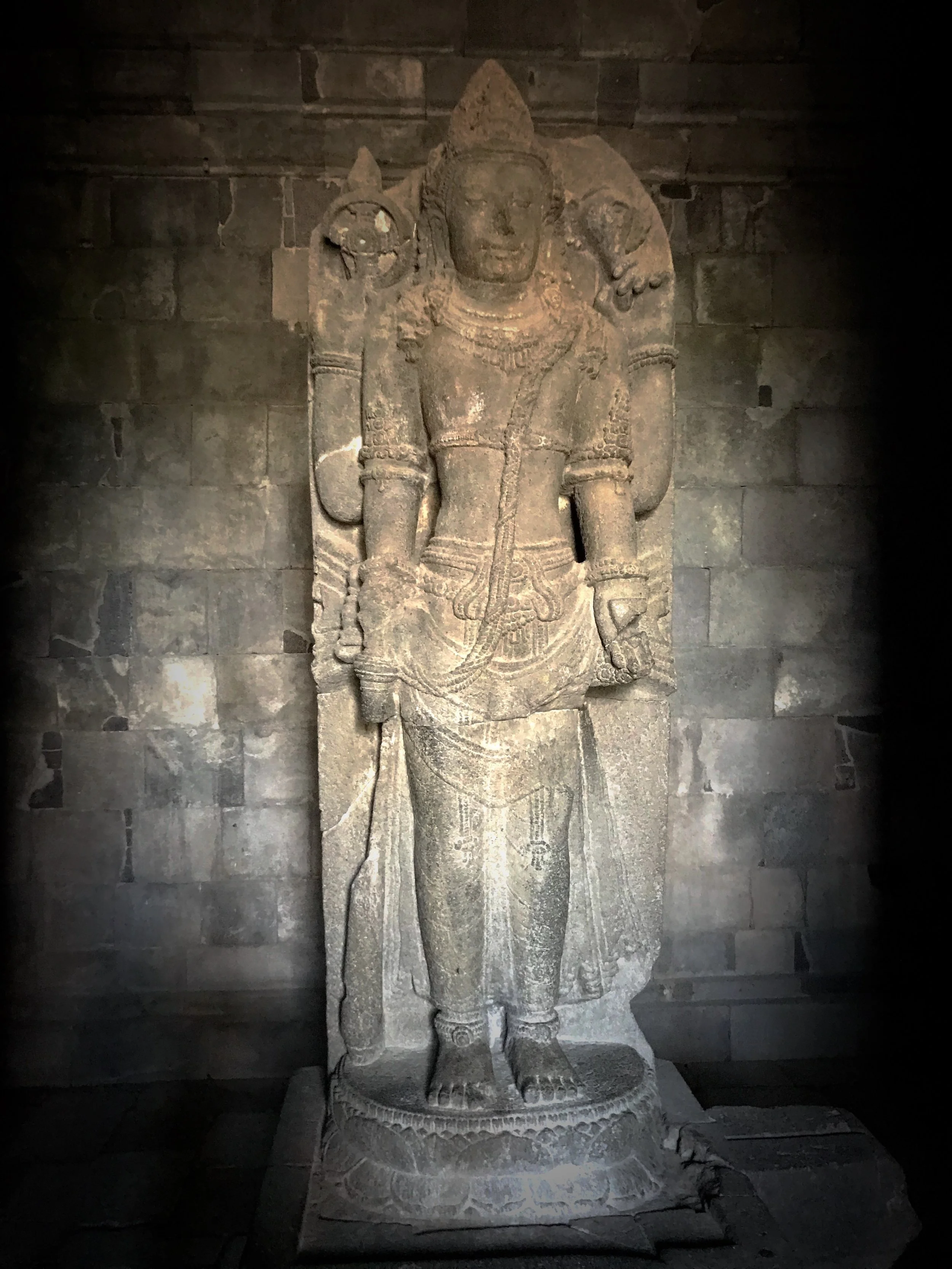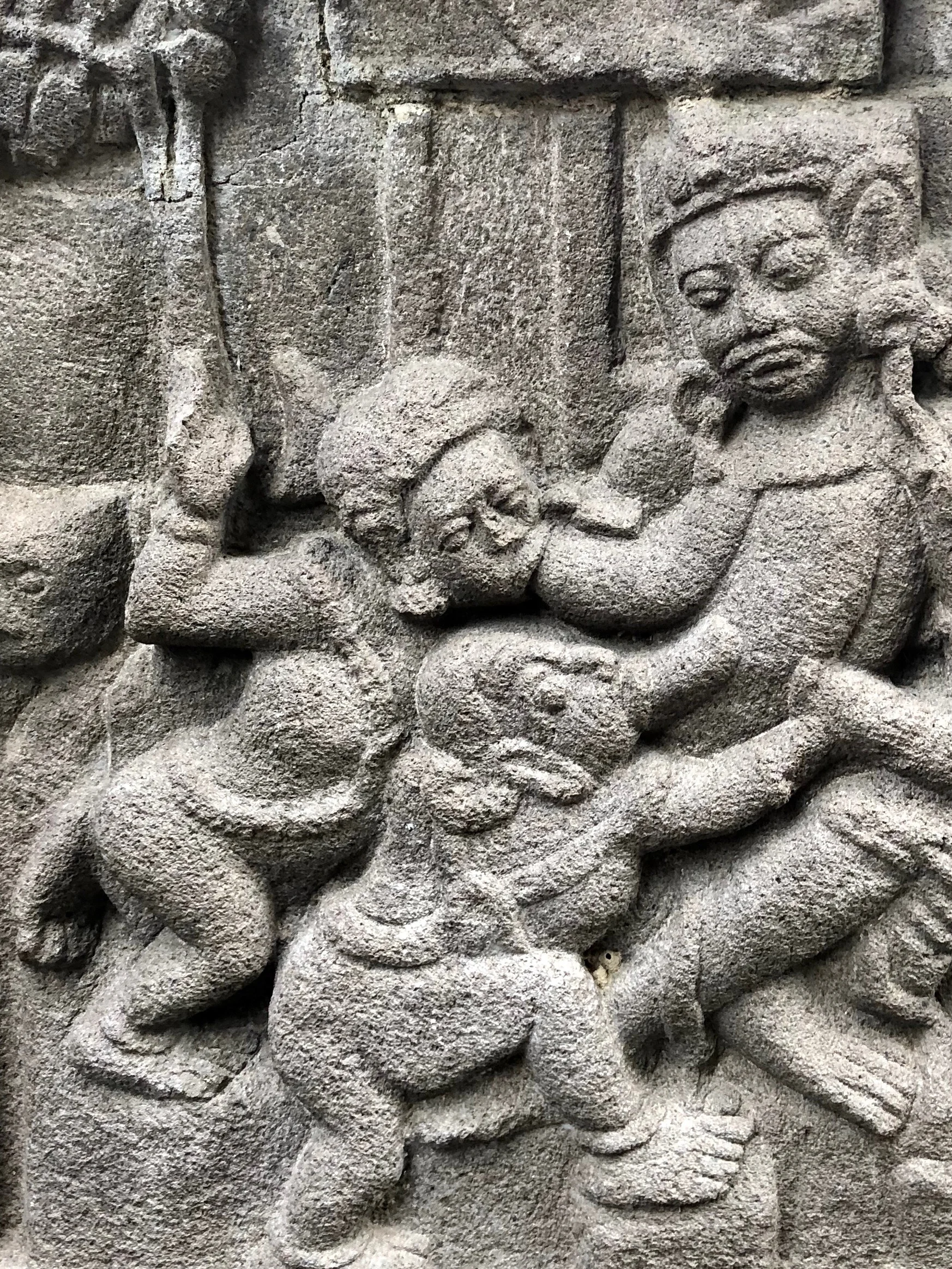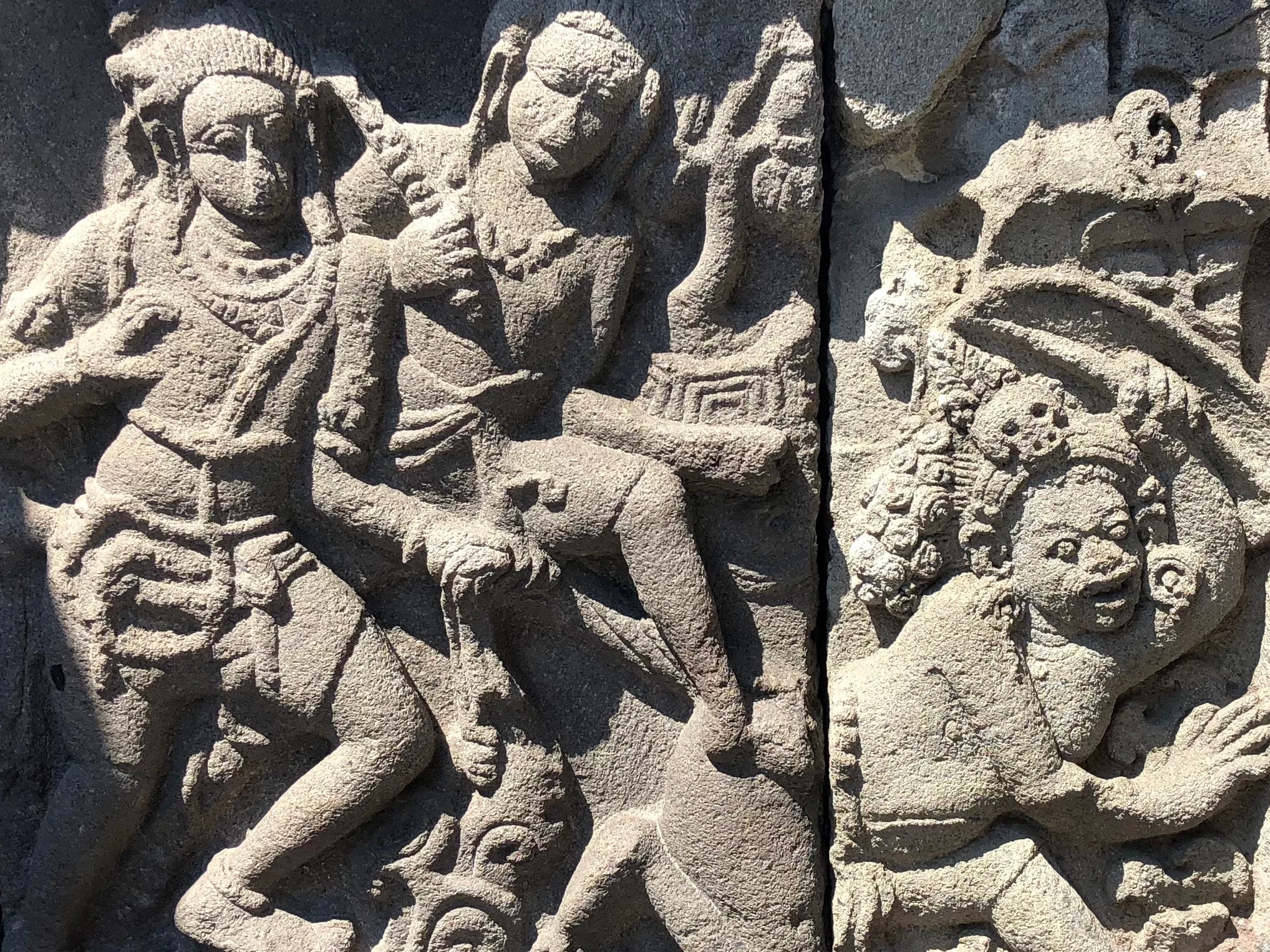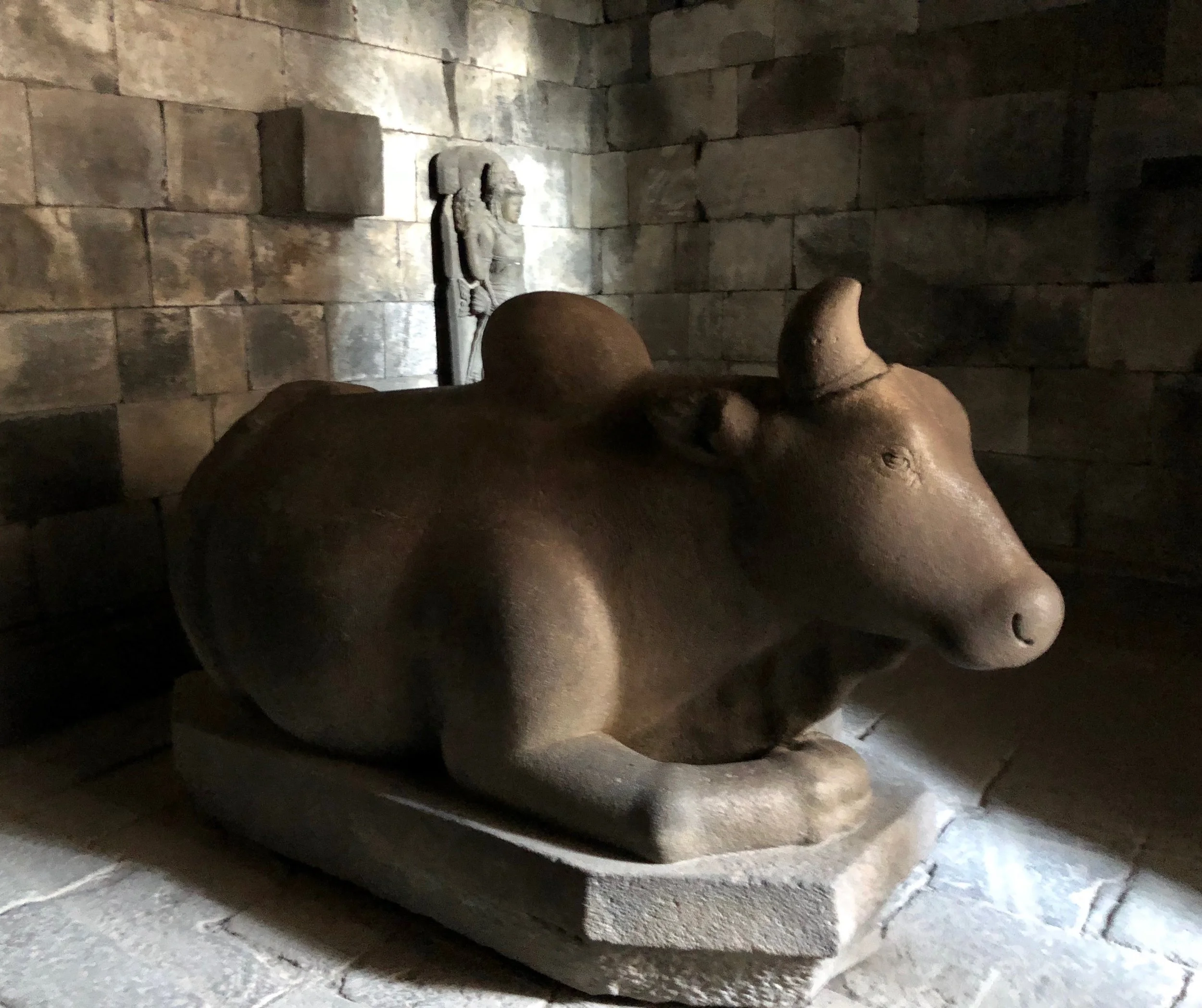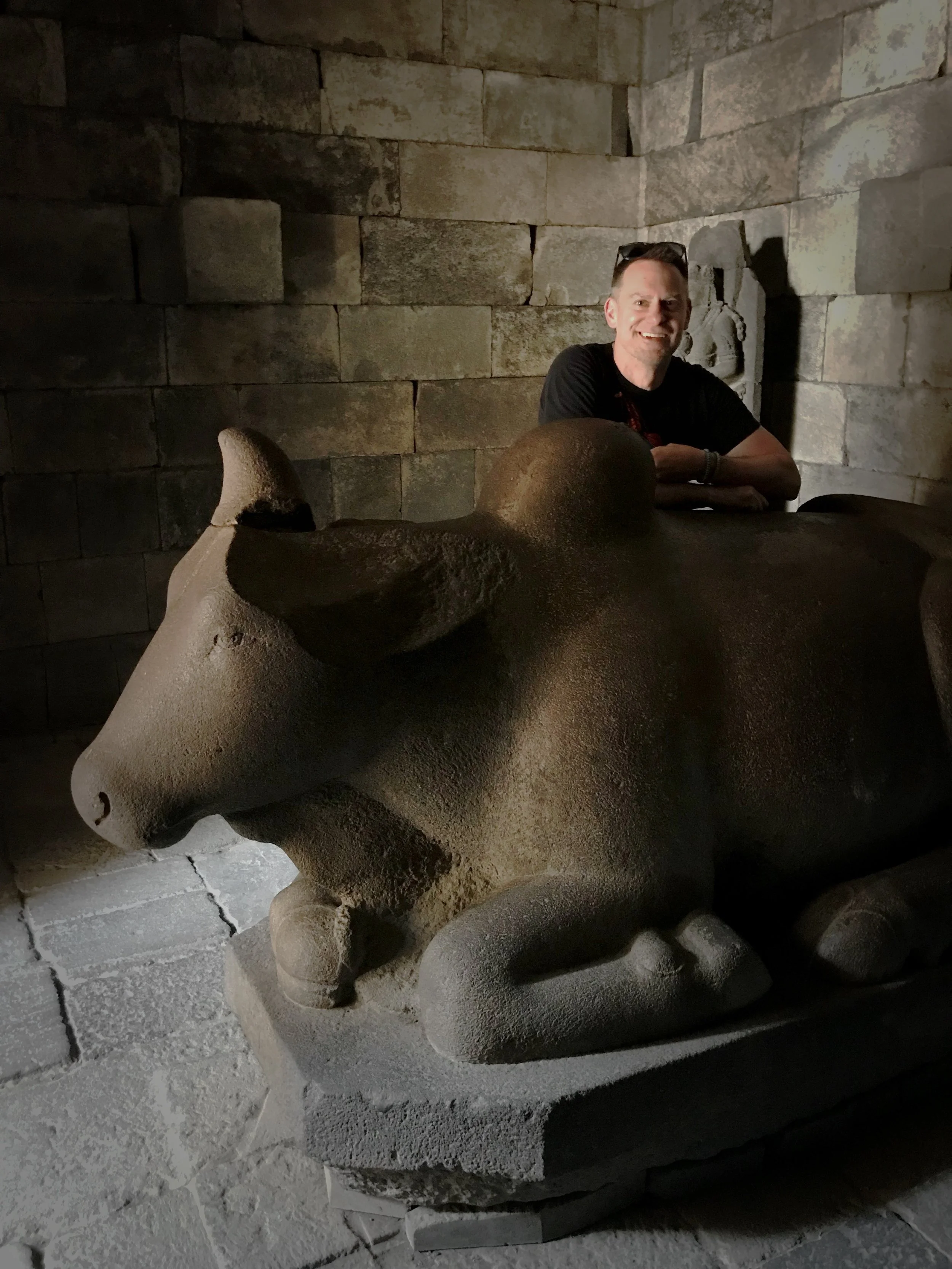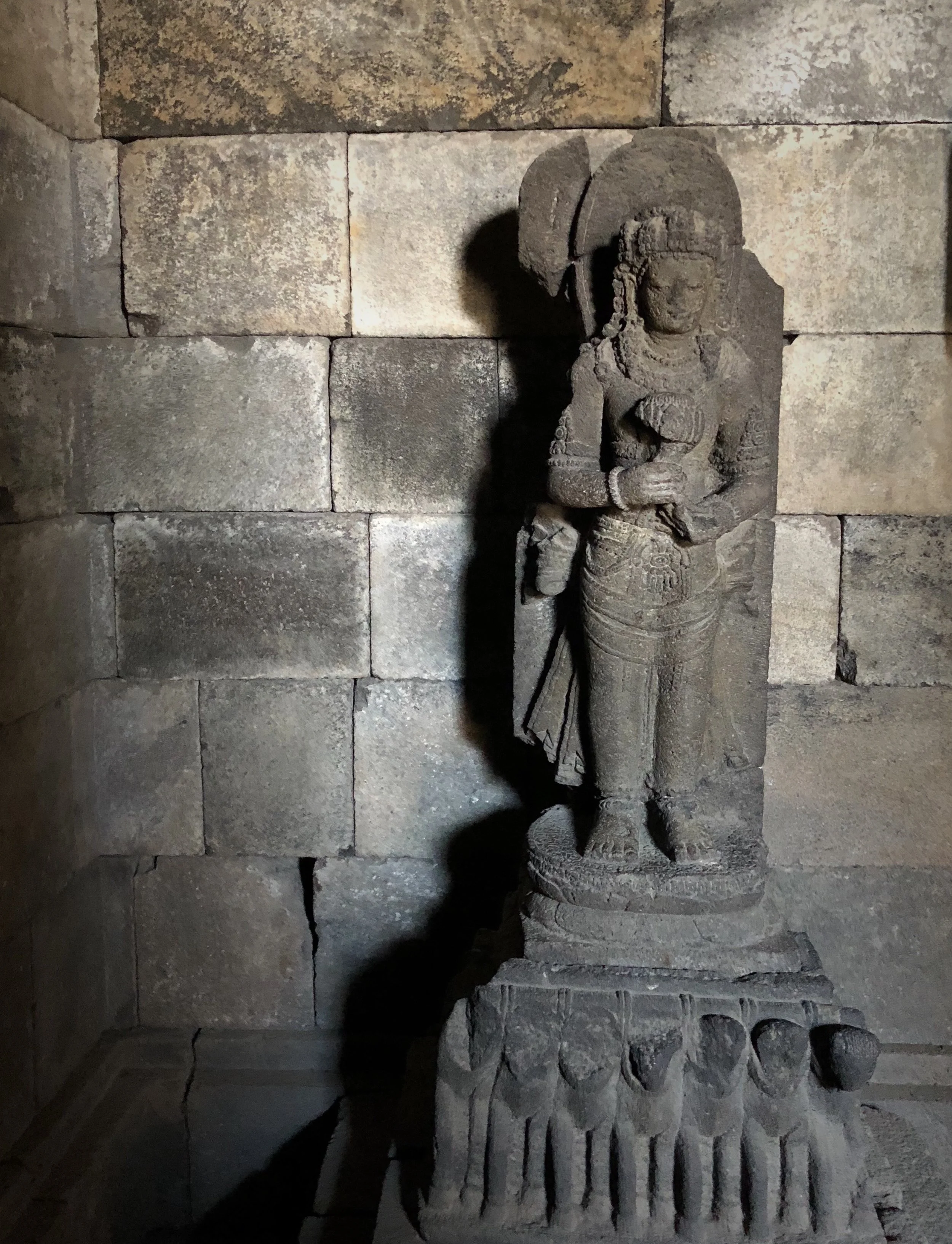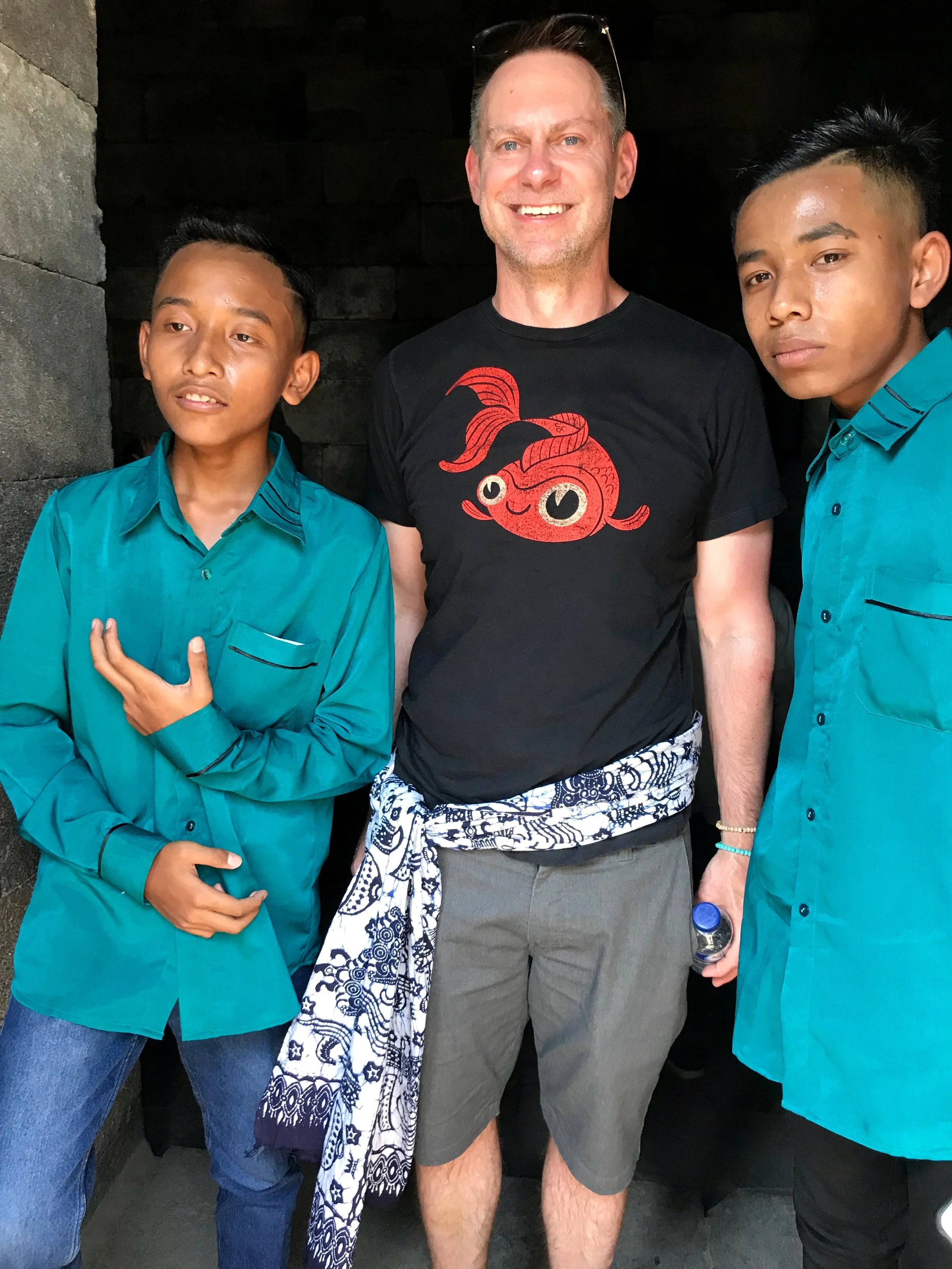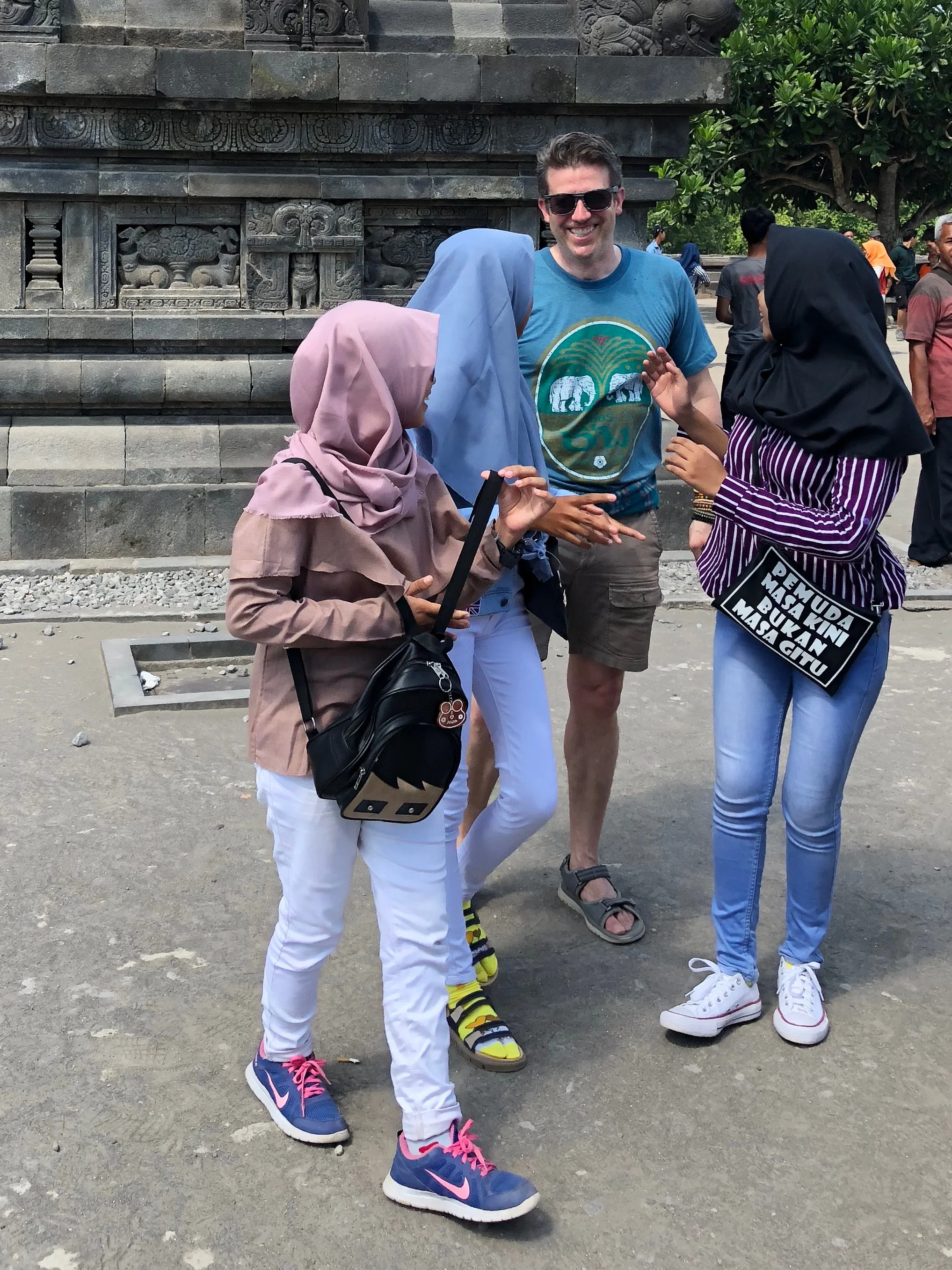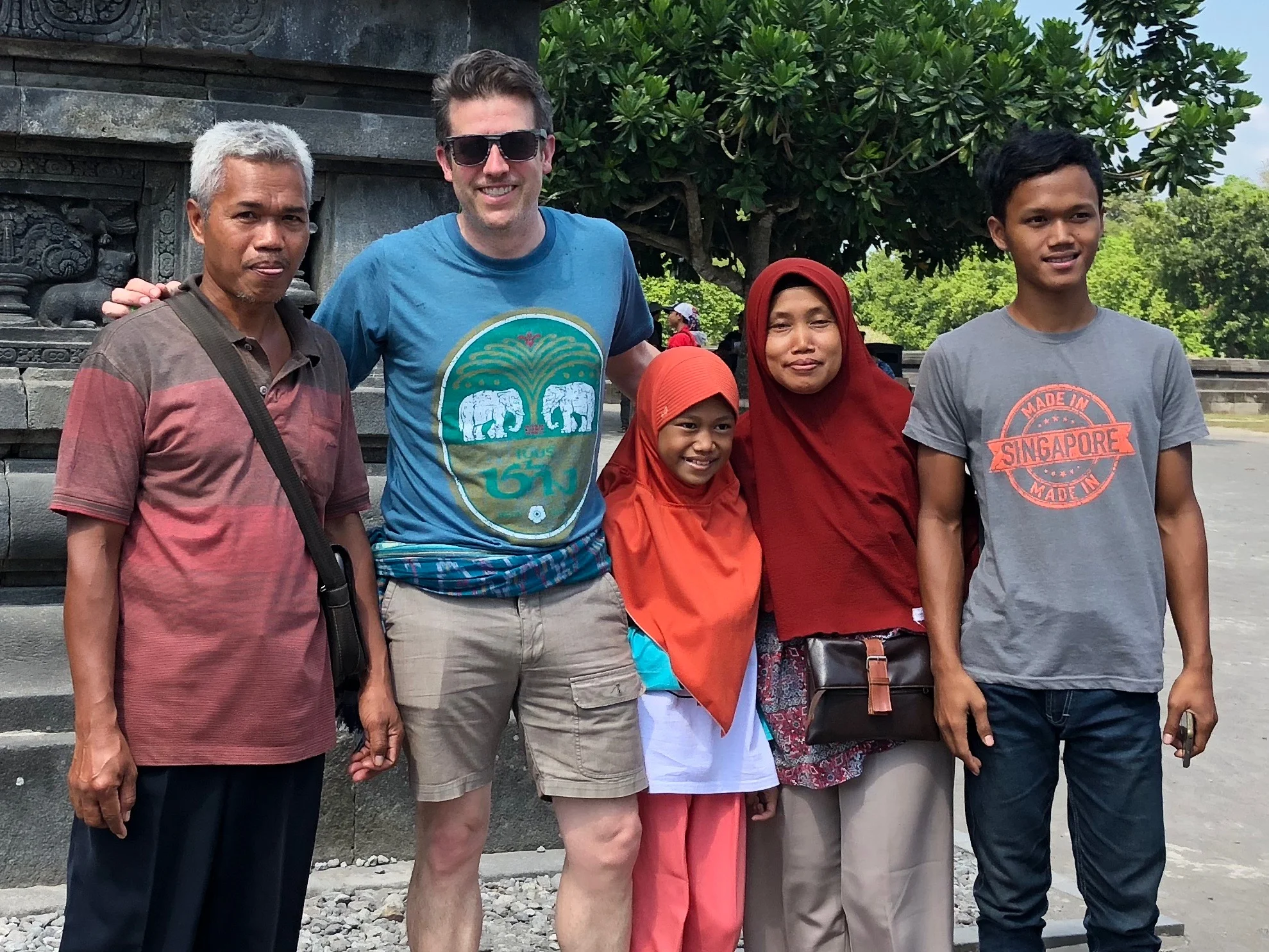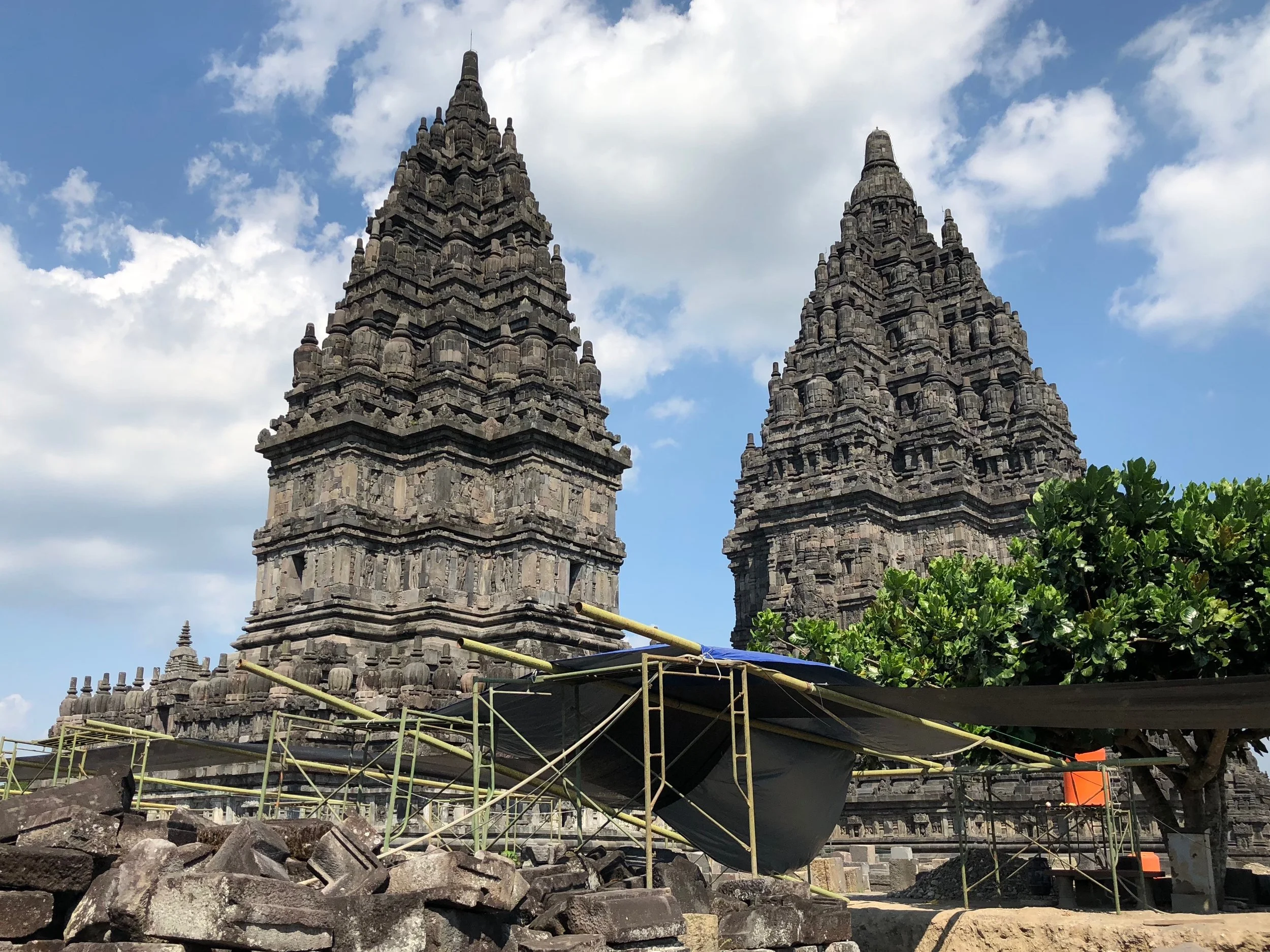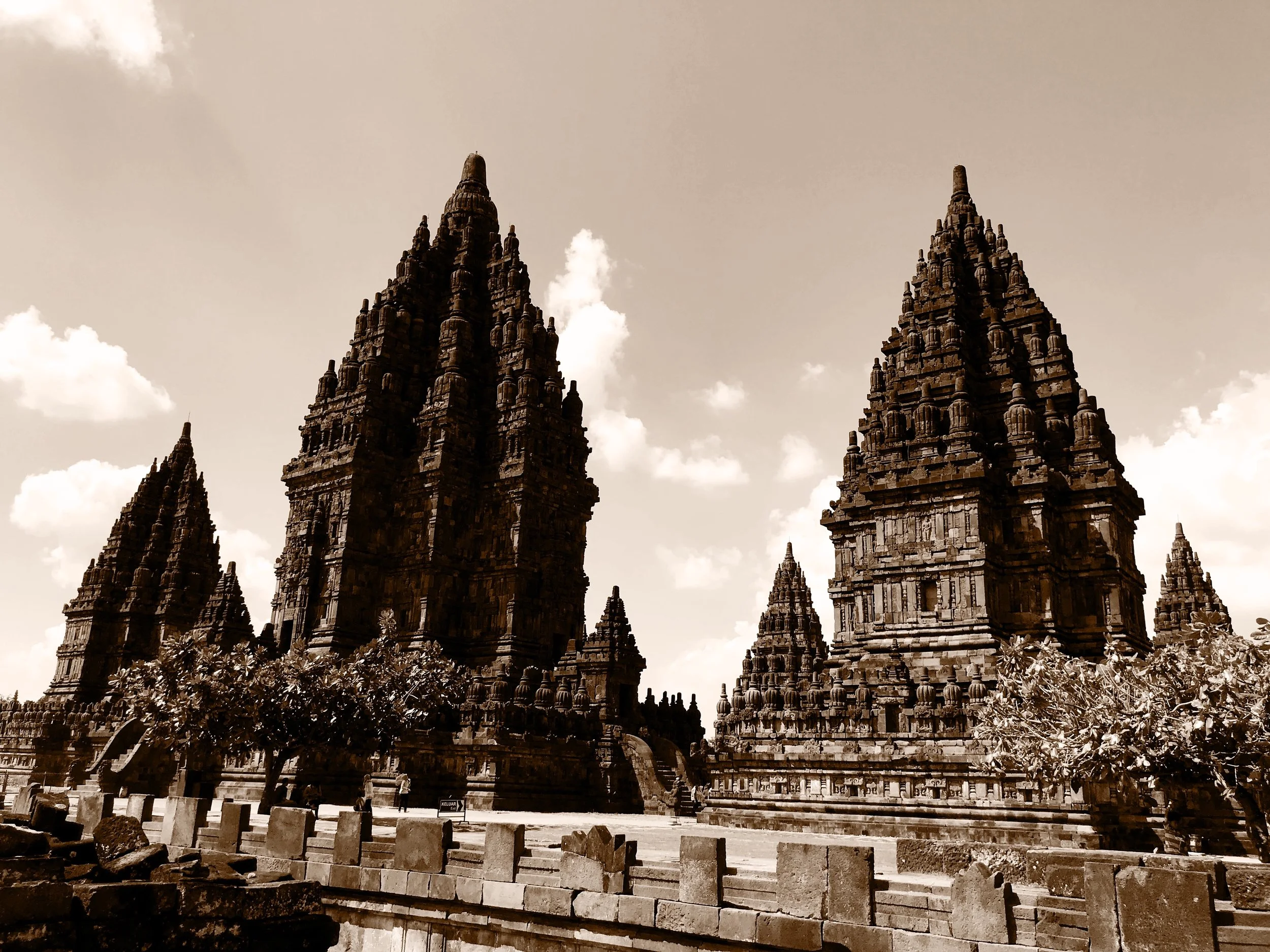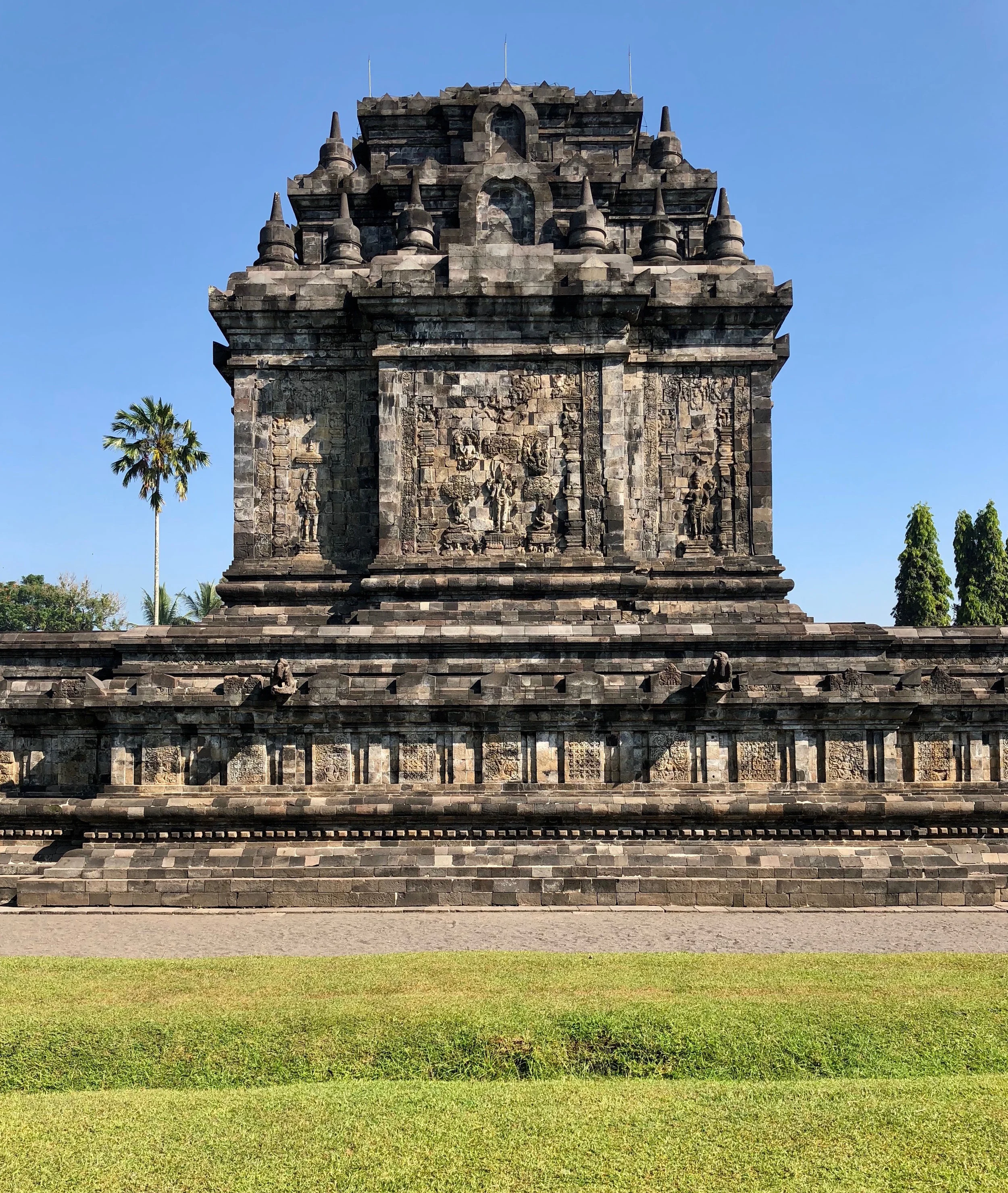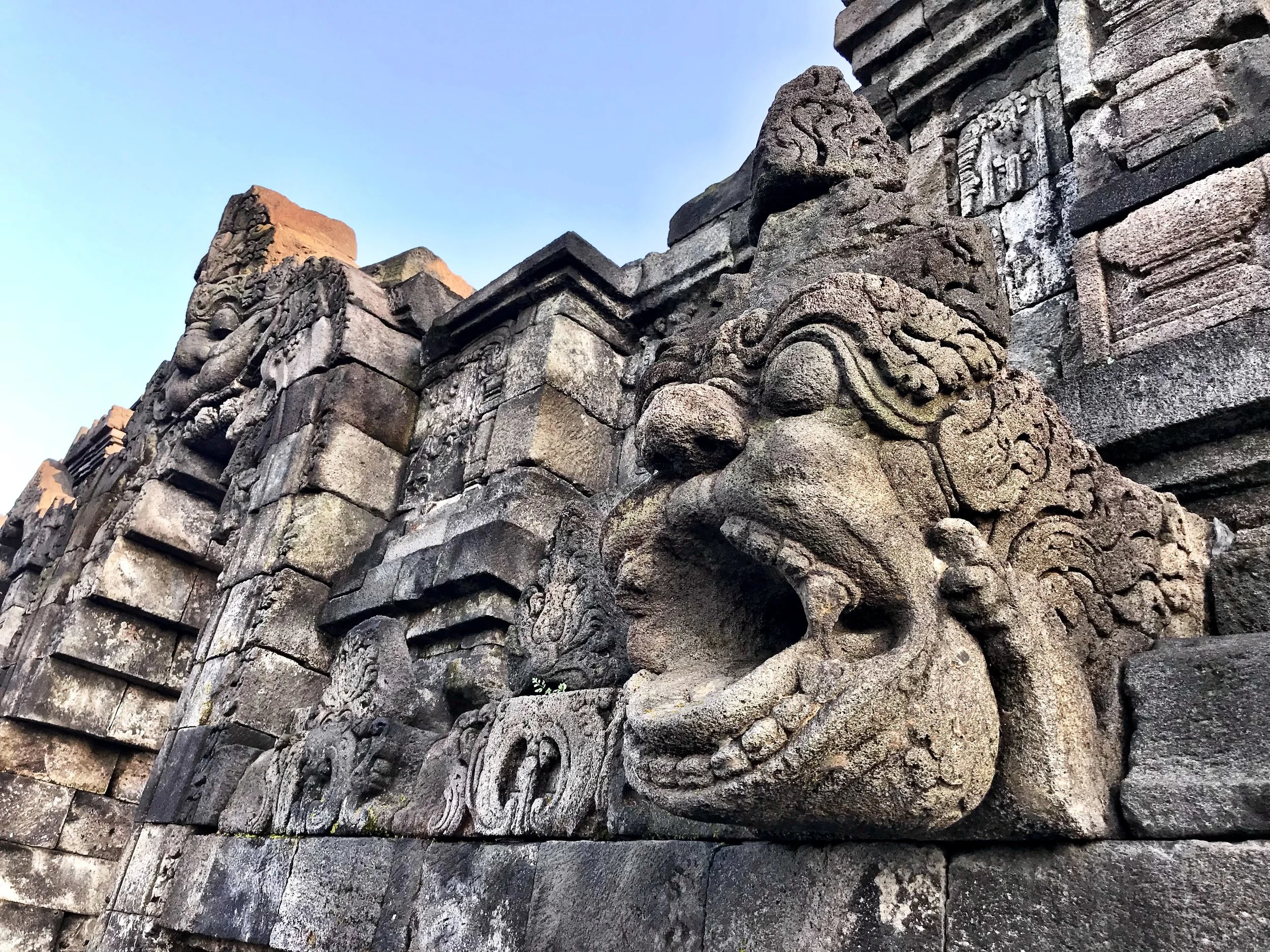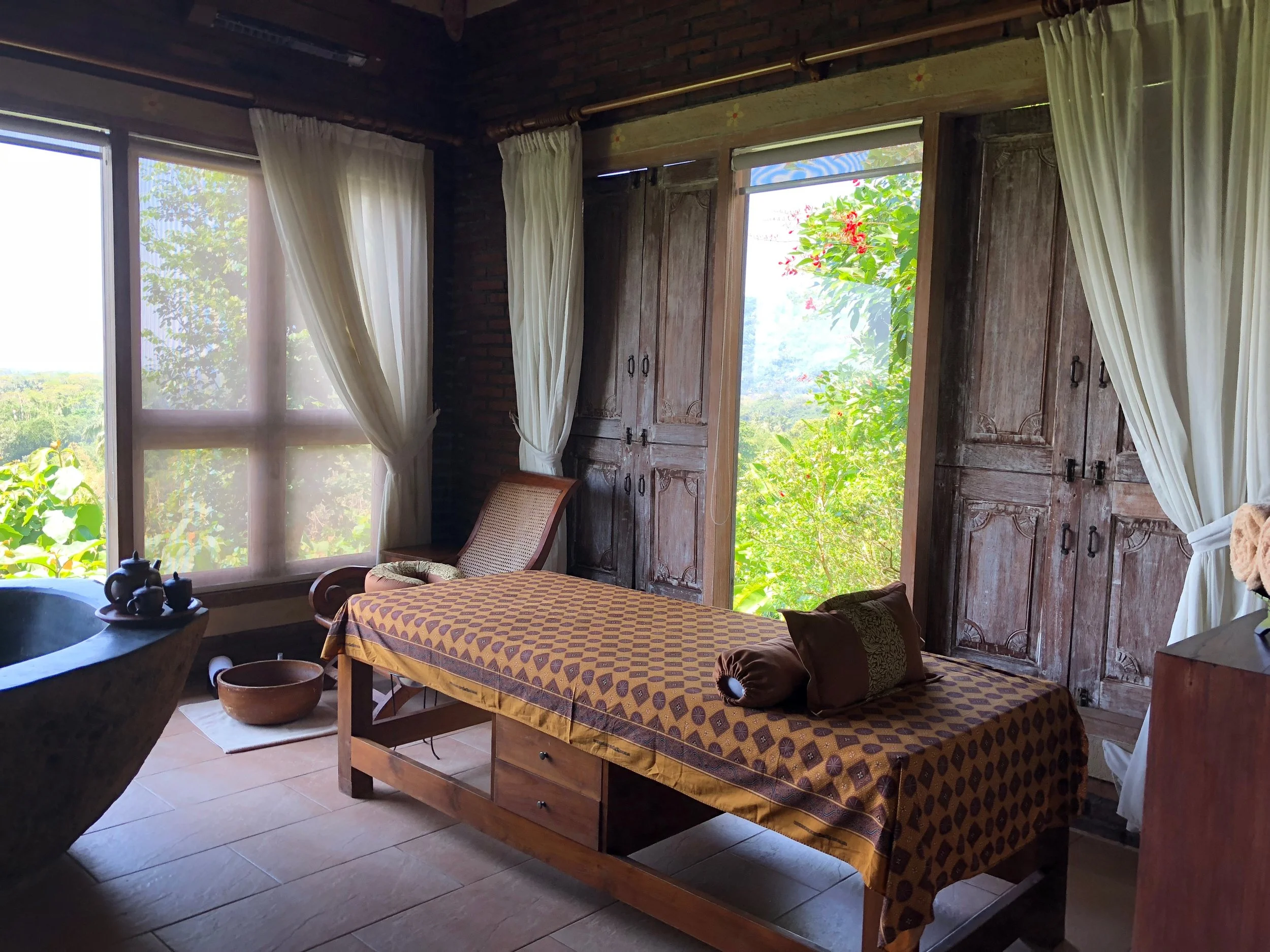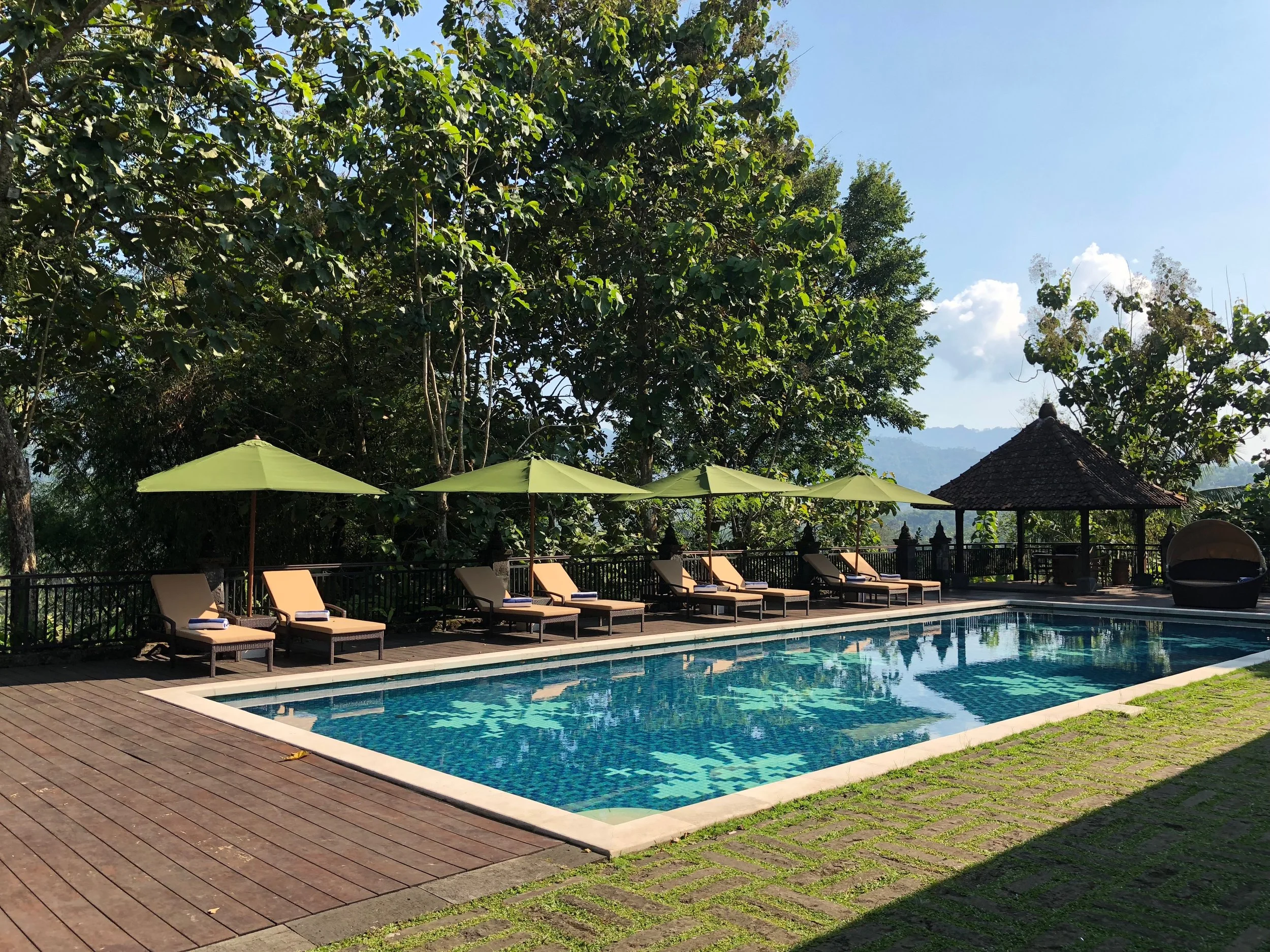If you’re in Indonesia, add Java to your itinerary and see this stunning temple complex that plays second fiddle to Borobudur.
Borobudur gets all the fame, but Prambanan is a must-visit complex on Java as well
Our main reason for visiting the island of Java, Indonesia was to see the spectacular ancient temple complexes of Borobudur and Prambanan. Given the importance of religion in ancient Java, it’s not surprising that both of these attractions are imposing in scale and have been declared UNESCO World Heritage Sites. Plus, the opportunity to stay in a private villa that came with an infinity plunge pool at the Plataran Borobudur Resort & Spa and a view of Borobudur in the distance was one Wally and I simply couldn’t pass up.
The complex contains temples to the Hindu trinity and the creatures they rode
The Prambanan Temple Compounds were located about a hour and a half northwest from where we were staying, and having a private driver provided by the resort made the journey getting there stress-free.
Wally and Duke sit atop unrenovated remains outside the complex
Whooo dat? We were surprised to pass some owls en route to the main temples
Many Priests and Ladies-in-Waiting
Shortly after we arrived at the temple complex, we were introduced to our guide, Dwi, who wore a shirt embroidered with the Wonderful Indonesia logo. As Dwi led us past the main entrance, he explained that the three concentric courtyards are laid out in the geometric form of a mandala and follow the concept of vastu shastra, an ancient Indian method of architecture and construction to enhance prosperity.
The small structures out front are called pewara, or “ladies-in-waiting”
Some of the ruins are intricately carved
The fragments of the temples fit together like puzzle pieces
Dwi added that the name Prambanan means “Many Priests,” quite possibly in reference to the outermost courtyard, which was once encircled by a wall. The original function is unknown but it may have served as a monastic community and included lodging for hundreds of brahmin priests and their disciples. As these buildings were most likely built of wood and brick, nothing remains of them.
The peaks of the temples rise into the sky — a bit higher than Borobudur
Directly in front of us was another large courtyard with hundreds of small shrines called pewara, or “ladies-in-waiting,” organized in concentric squares four rows deep. Almost all of these temples had been reduced to rubble. We asked Dwi if there are plans to reconstruct them, and he explained that this was not likely, as much of the original stonework has been destroyed by erosion, earthquakes or looting. Like Borobudur, at least 70% of the original material must be used in restoration to be declared a UNESCO World Heritage Site.
The ornate black stone temples create an imposing silhouette
Duke and Wally take a break on the steps leading up to one of the temples
The Main Temples
At the heart of the complex stand the most sacred and well-preserved temples, the scale and detail of which can only be appreciated when you are standing in front of them. Three of the main shrines are dedicated to the Trimurti, the Hindu trinity of Brahma the Creator, Shiva the Destroyer (to whom the largest central temple is dedicated) and Vishnu the Preserver. The smaller vahana shrines are for the deity’s respective animal mounts: Hamsa the Swan, Nandi the Bull and Garuda the Eagle. There are also two small temples between the rows of Trimurti and vahana shrines, although the function of these remains unclear.
Duke poses with a group of local boys, with Prambanan behind them, looking like a fake backdrop
The initial construction of Prambanan began around the middle of the 9th century during the reign of Rakai Pikatan and served as the royal temple of the kingdom of Mataram. Additional structures were added by the successive Kings Rakai Kayuwangi and Balitung Maha Sambu.
Peeking through at a smaller vahana temple for the gods’ mounts
The staircases are carved in the shape of mekara, creatures with other beings coming out of their mouths
Pretty in pink: An Indonesian woman enjoys her visit
Dwi suggested that Prambanan was built as a political and religious response to mark the return of the Hindu Sanjaya dynasty after decades of Buddhist-led Sailendra rule.
The Shiva Temple is the largest of the bunch
The Shiva Temple
Not to be outdone by Borobudur, the central Shiva temple is the tallest. At 154 feet, it’s 41 feet higher than the triple-tiered stone umbrella chatra that once served as the pinnacle of its rival complex. The temple is embellished with a series of elegant carvings along the inner wall, depicting scenes from the ancient Indian epic the Ramayana.
Those not pure of heart will be crushed as they try to walk under Kala’s mouth — or so the legend goes
Wally loves nothing better than to explore an ancient temple
A lion sits within a small niche flanked by half-woman and half-bird kinnara
Wally and I followed our guide and made the ascent up the steep stone steps before reaching the eastern sanctuary chamber of Shiva. We passed through a portico with the monstrous gaping half-mouth of Kala leering at us from its lintel. Wally asked Dwi what this creature was. He replied by saying that if you’re a bad person, the mouth will close down upon you!
The statue of Shiva the Destroyer
Shiva stands upon a lotus, which symbolizes enlightenment — an odd depiction of the god
The east chamber contains a four-armed 10-foot-tall statue of Shiva, standing erect atop a blooming lotus flower, the Buddhist symbol of enlightenment. Some historians believe this rare depiction may be due to the union between Hindu Prince Rakai Pikatan and Buddhist Princess Pramodhawardhani. However, it is also thought that the statue was made in the likeness of King Mataram Balitung, who considered himself the divine manifestation of Shiva.
The elephant-headed Ganesha grants wishes
A nearby chamber contains a statue of his portly son Ganesha, the remover of obstacles. Dwi regaled us with an interesting tale of how Ganesha broke off a tusk and used it as a pen to transcribe the ancient Indian epic the Mahabharata. The tip of his trunk dips into a bowl of sweets, of which he is very fond.
Fierce Durga holds weapons in six of her eight hands
This dwarf isn’t happy that Durga is touching his head
In the northern chamber is a statue of Shiva’s consort Durga, also referred to by locals as Loro Jonggrang, the Slender Virgin. The protective mother goddess of the Hindu universe is depicted standing in a relaxed pose, her right leg slightly bent and her hip jutting out to the left. Six of her eight arms hold weapons. She stands on the back of the asura Mahisa, a demon in the form of a buffalo. Durga holds his tail in one hand, while another touches the top of a dwarf’s head — a taboo gesture in Hinduism, as the head is considered the highest and most sacred part of the body.
A statue of the dwarf hermit Agastya with his trident
The south-facing chamber has a statue of the hermit Agastya, one of the most venerated sages in Hinduism, portrayed as a dwarf with a long beard. He has a fan on his left shoulder and a trident on his right.
The bas-relief panels of the Shiva Temple depict the epic love story of Rama and Sita:
The statue of Brahma the Creator
You can’t sneak up on this guy!
The Brahma Temple
A single chamber inside the temple contains a statue of Brahma, depicted with his four faces and four arms. The four faces symbolize the four cardinal directions as well as the four Vedas, the most sacred Hindu scriptures: The Rig Veda, Yajur, Sama Veda and Atharva Veda.
The Temple of Vishnu, like the others, is carved out of volcanic stones pieced together
The Vishnu Temple
Like the temple dedicated to Brahma, a single interior chamber holds a statue of the deity. Vishnu wears a tall crown upon his head. He has four limbs, two of which are raised up and the other two down. His upper right hand holds a discus and the left holds a conch shell.
Vishnu the Protector holds a discus and conch shell
Are they breastfeeding? Some of the carvings on Hindu temples can be quite bizarre
The Temple of Vishnu is decorated with carvings retelling the epic battles of Krishna
Blue-skinned Krishna is an avatar of Vishnu but is also worshipped as a god
The bulbous lingam-yoni ornaments encircling the temples represent male and female reproductive parts
The Nandi Temple
All gods need transport, and at Prambanan, they have their own smaller temples. Nandi is the only statue of the vahanas that has survived.
Nandi the Bull carried around the god Shiva
We’re drawn to various characters in mythology — and Duke has always loved Nandi
The temple for Nandi the Bull sits in front of the Shiva Temple. In the inner chamber of this shrine, the humped reclining statue of Nandi rests on a raised platform facing the entrance door so it may perpetually gaze on Shiva. Sadly, its left horn has broken off and is missing. To the left is a statue of Surya, the Hindu god of the sun, standing atop seven horses.
Surya, the god of the sun, stands on a chariot drawn by seven horses
The Paparazzi Descends Upon Us
After our guide Dwi bade us adieu, we continued to explore the complex. Local students who were also visiting Prambanan excitedly approached, asking if if it would be OK to take a picture with us. At first it was fun and we were flattered, but after 10 or so photos, we had to politely say no with a smile and fled the complex.
The minute our guide left us, the locals swarmed, asking to take photos with us
Get to Prambanan as early as possible — busloads of schoolkids take field trips to the temple complex
At first we were amused by all the attention
The girls wore jeans, sneakers and brightly colored headscarves. “You’re so tall!” they exclaimed
After about 10 photos, posing with strangers got a bit old
Around back, there were scaffolds, work in progress — and no tourists — so we were able to make our escape from all the attention
We recommend visiting Borobudur and Prambanan on different days. Each complex is completely different, and I honestly feel that we wouldn’t have been able to appreciate the grandeur and complexity of each site if we crammed them into a single day. –Duke
Prambanan Temple
Prambanan
Kranggan
Bokoharjo
Prambanan
Sleman Regency
Special Region of Yogyakarta
Indonesia

